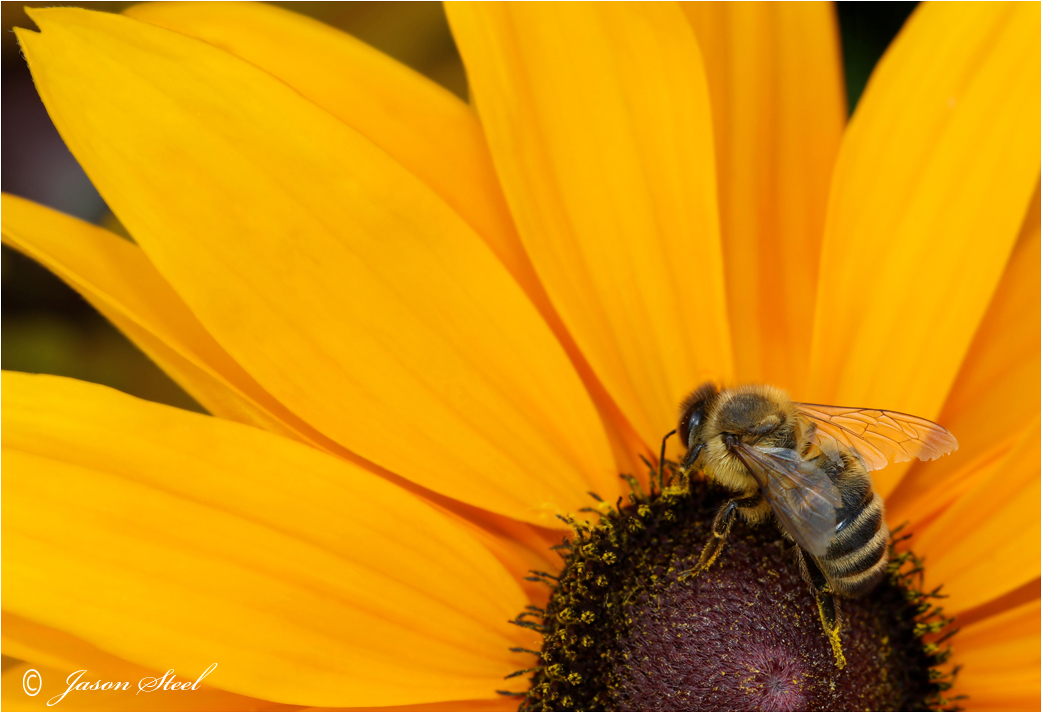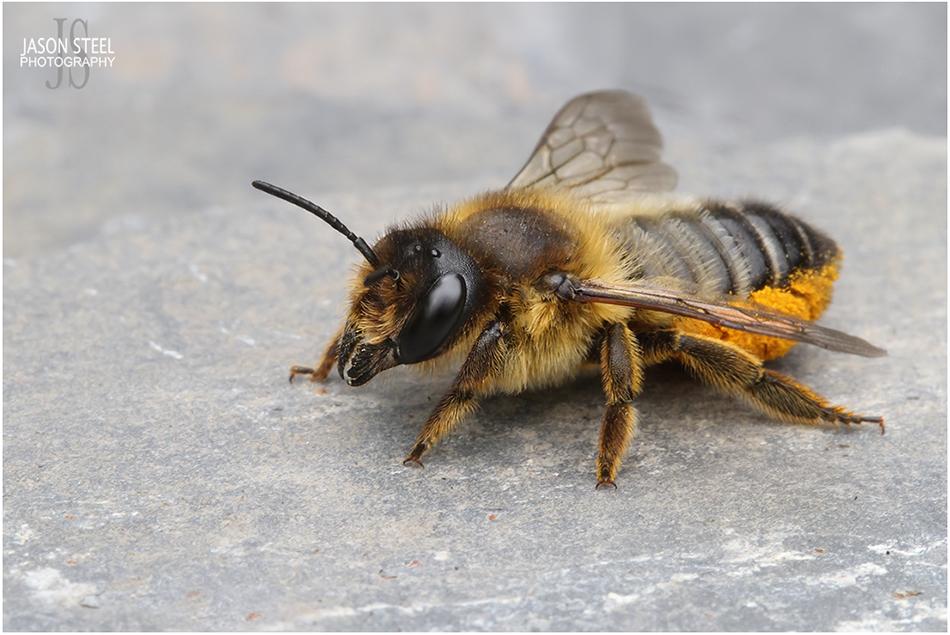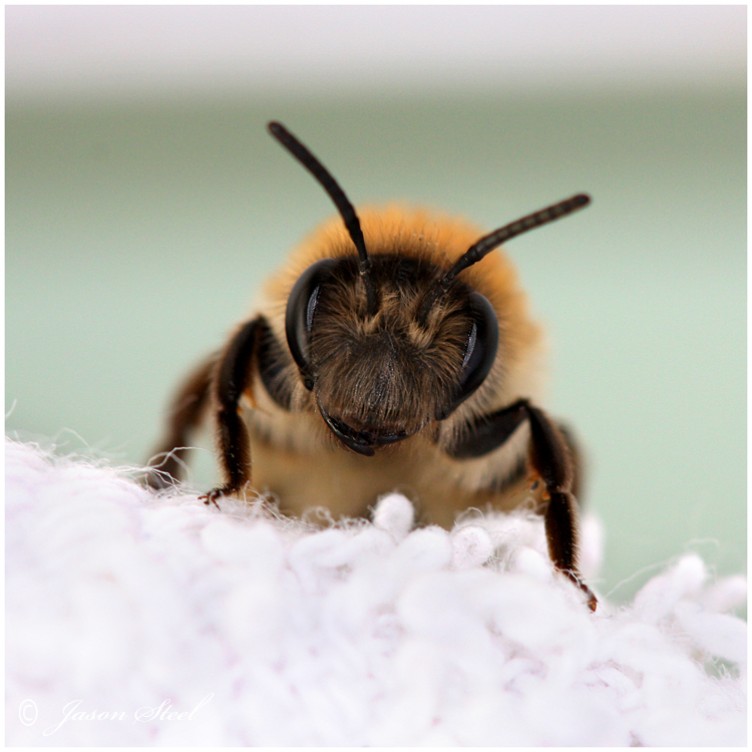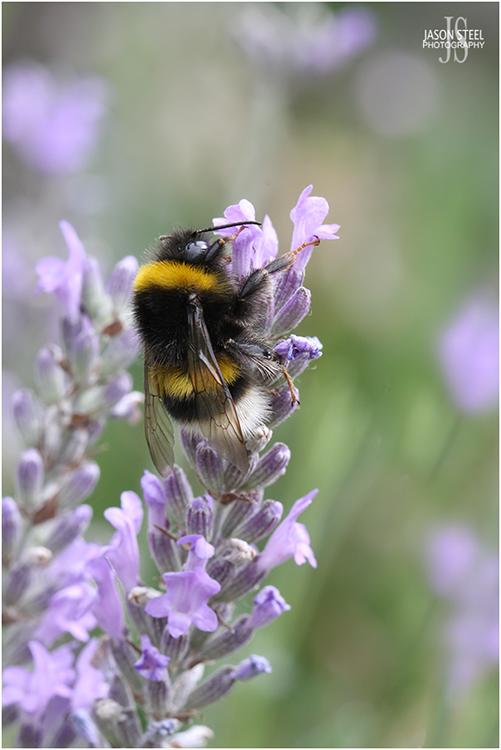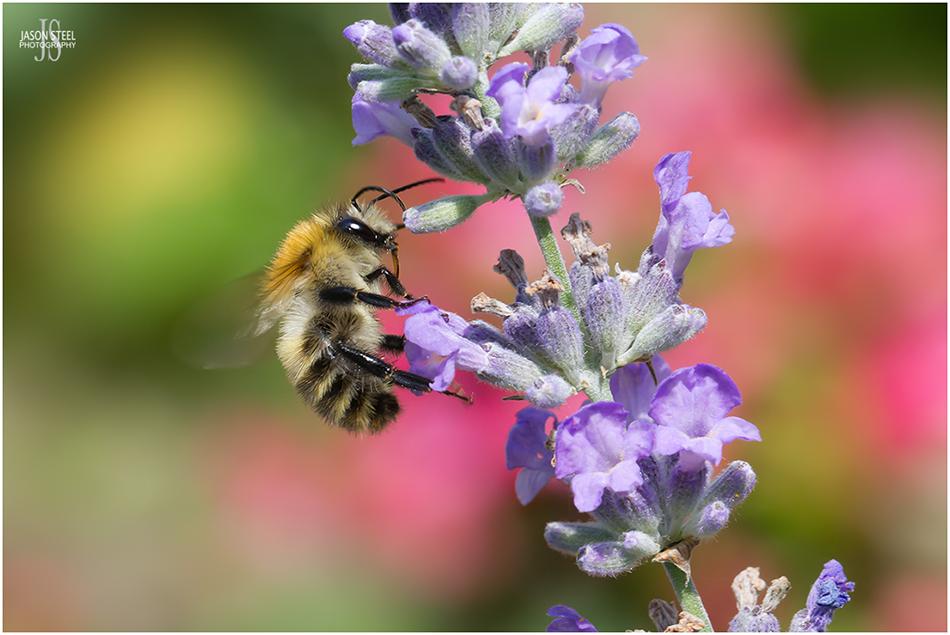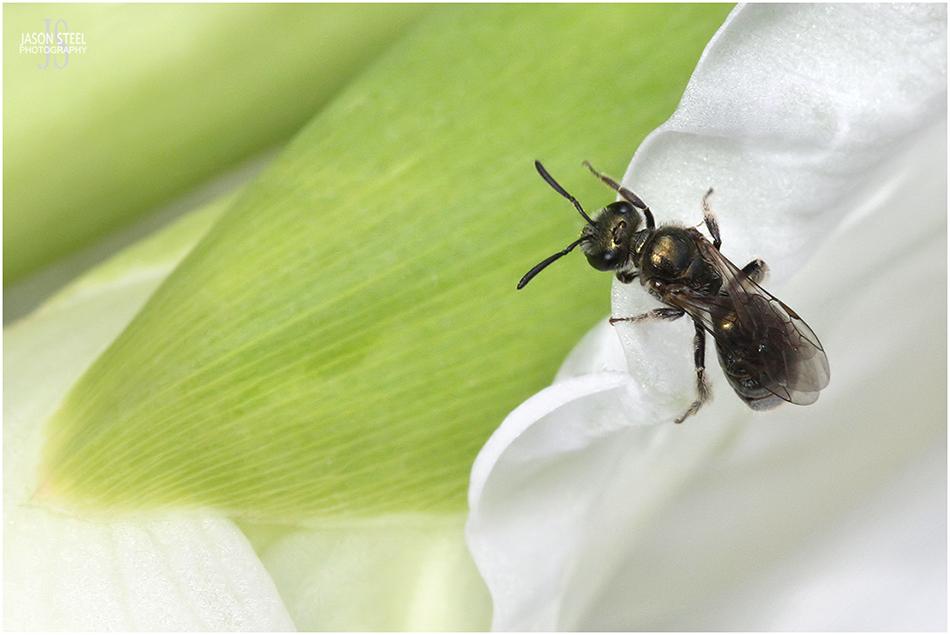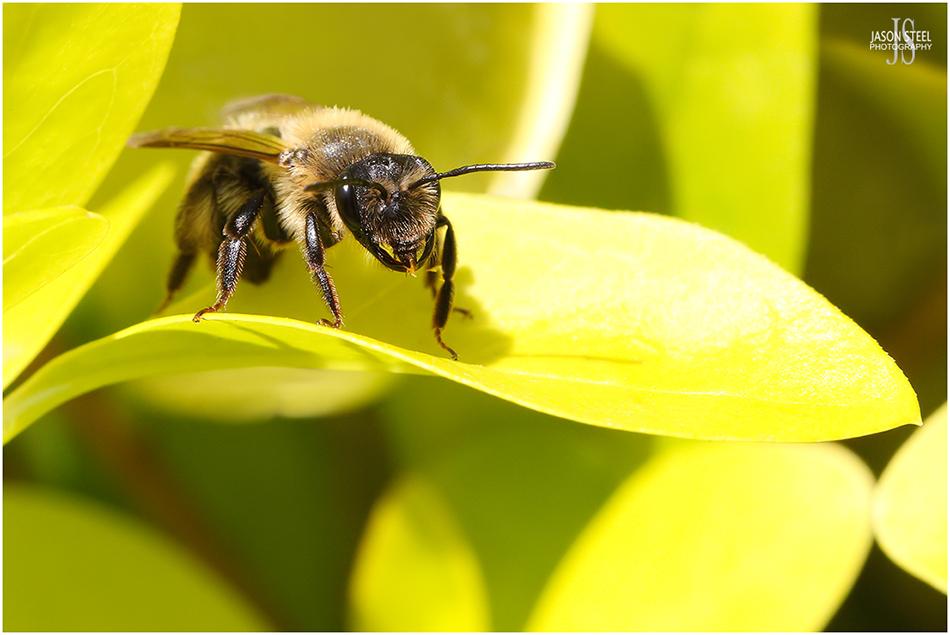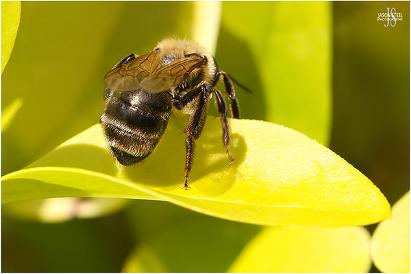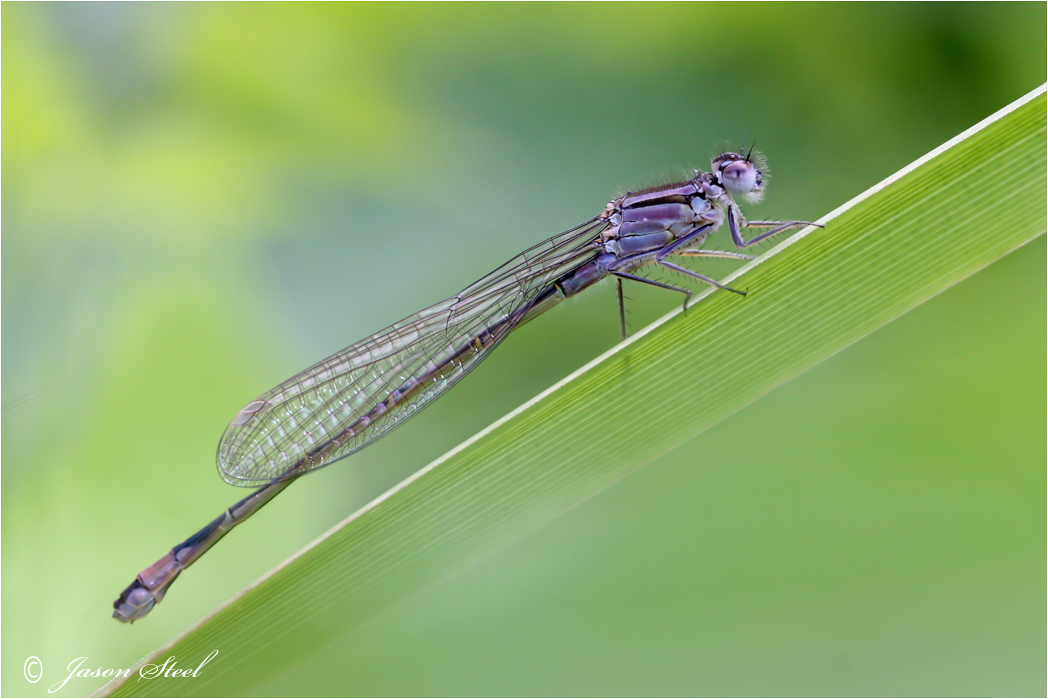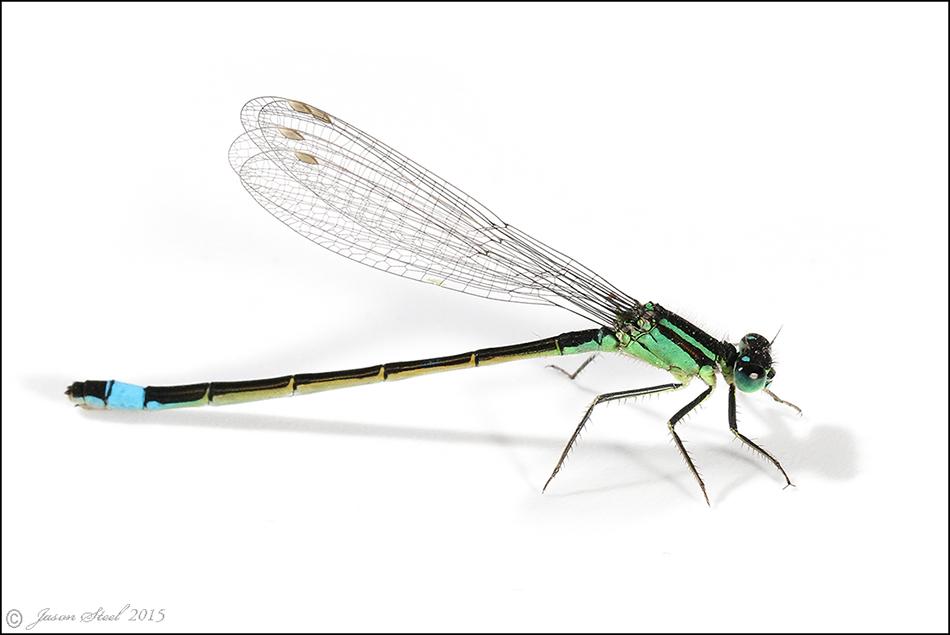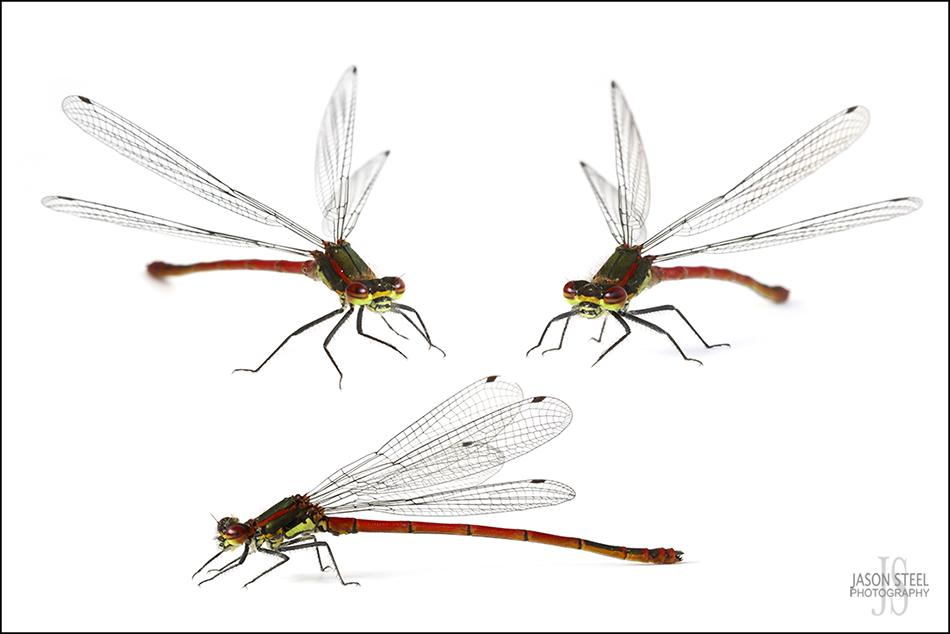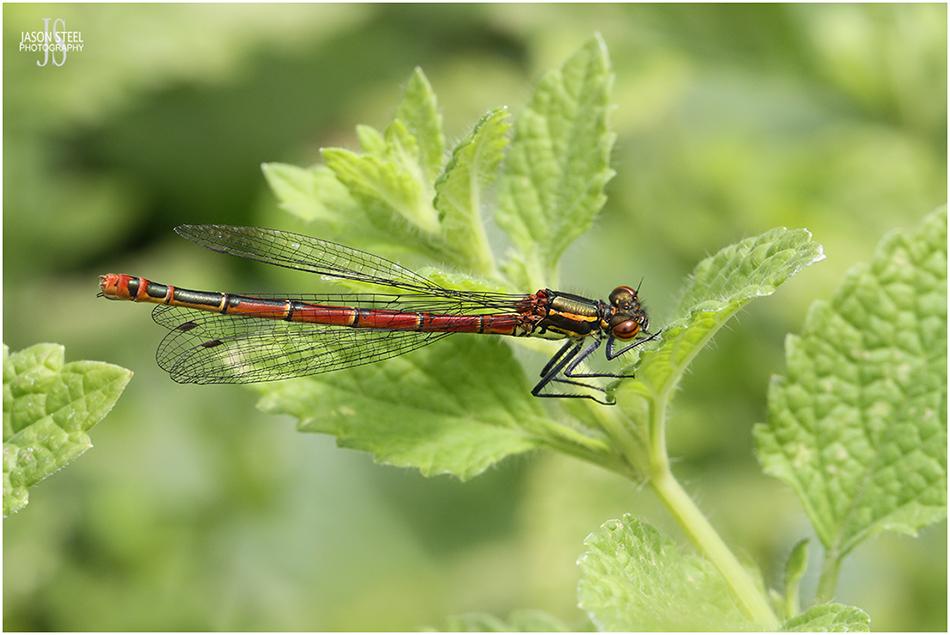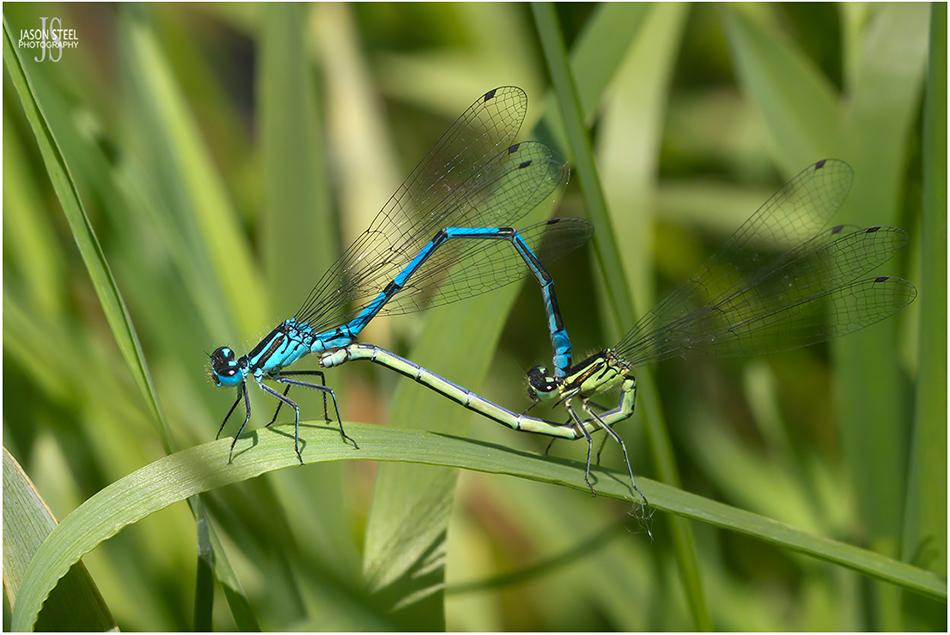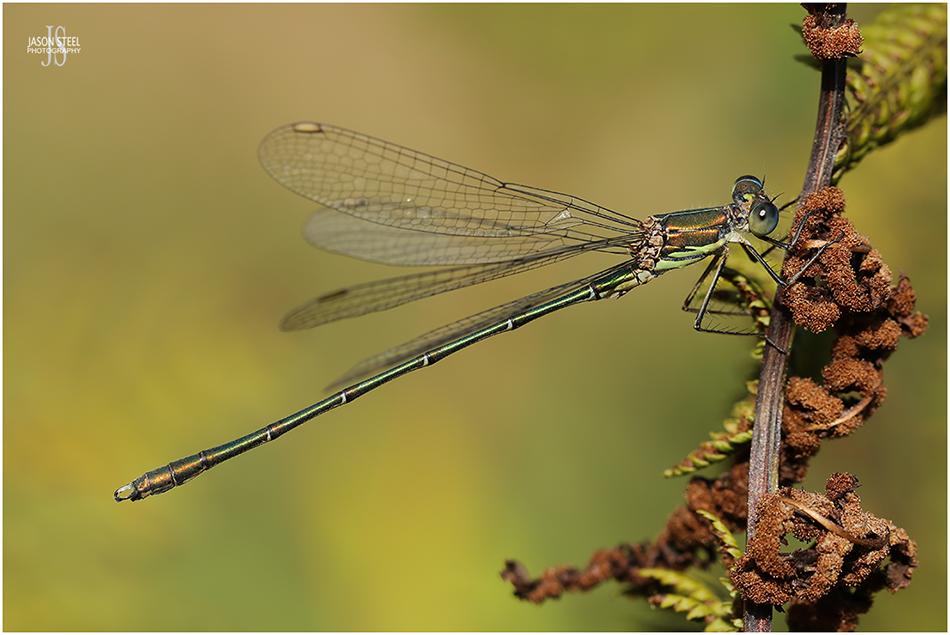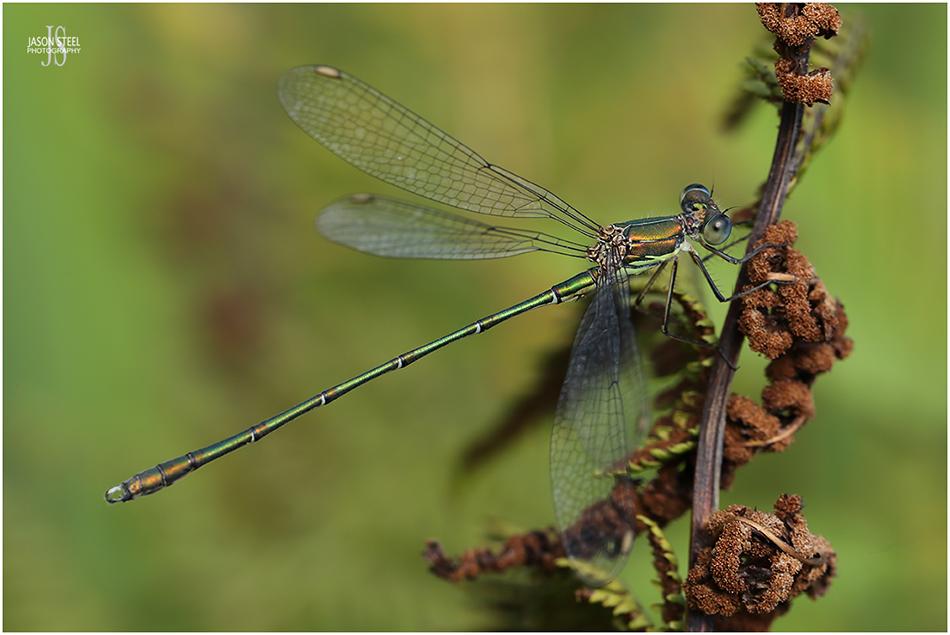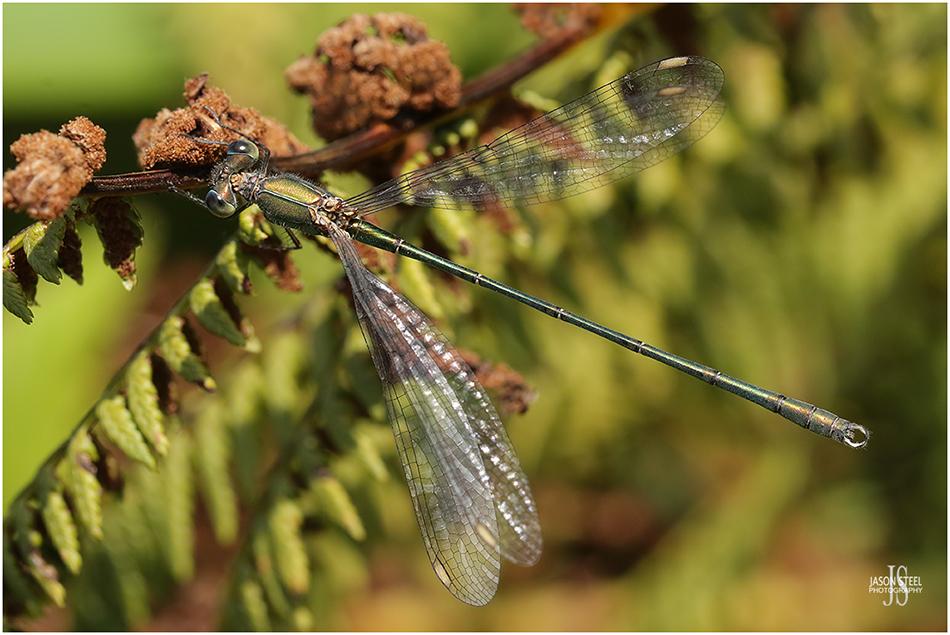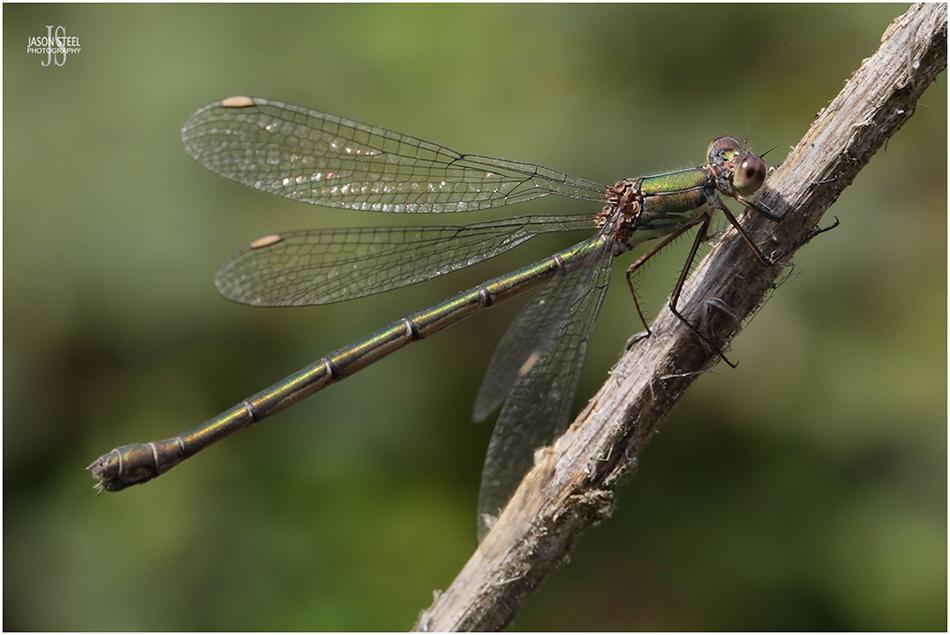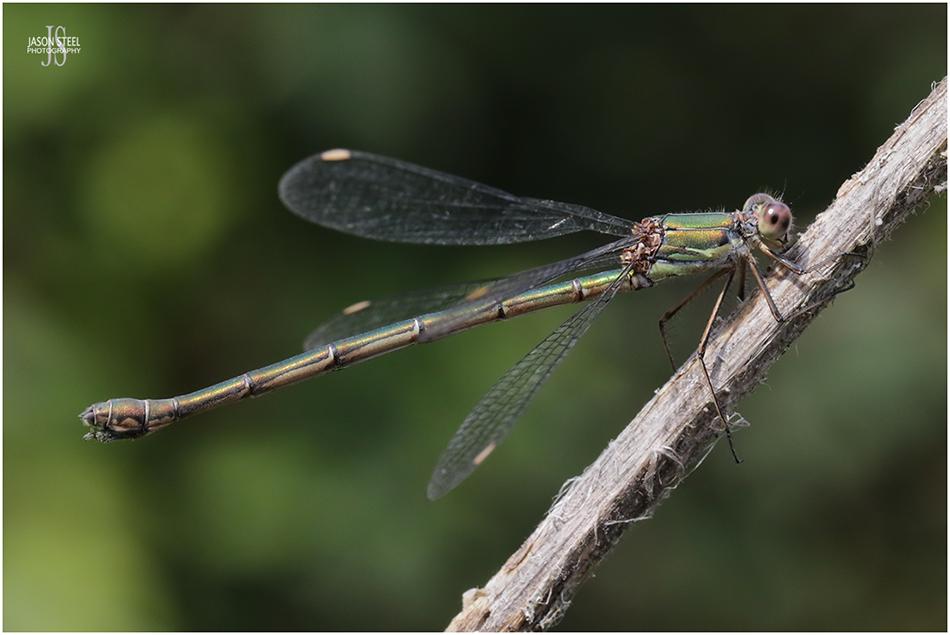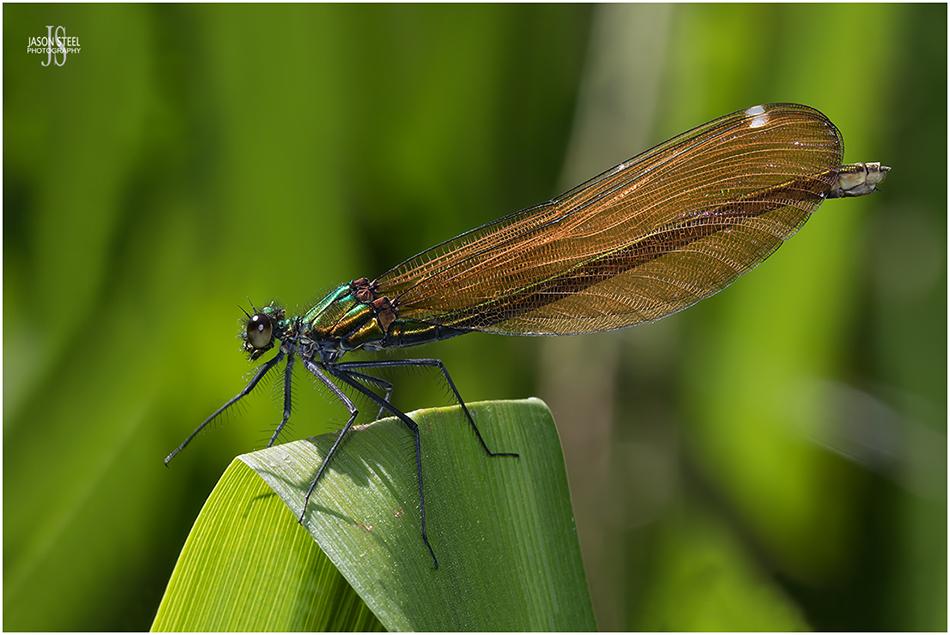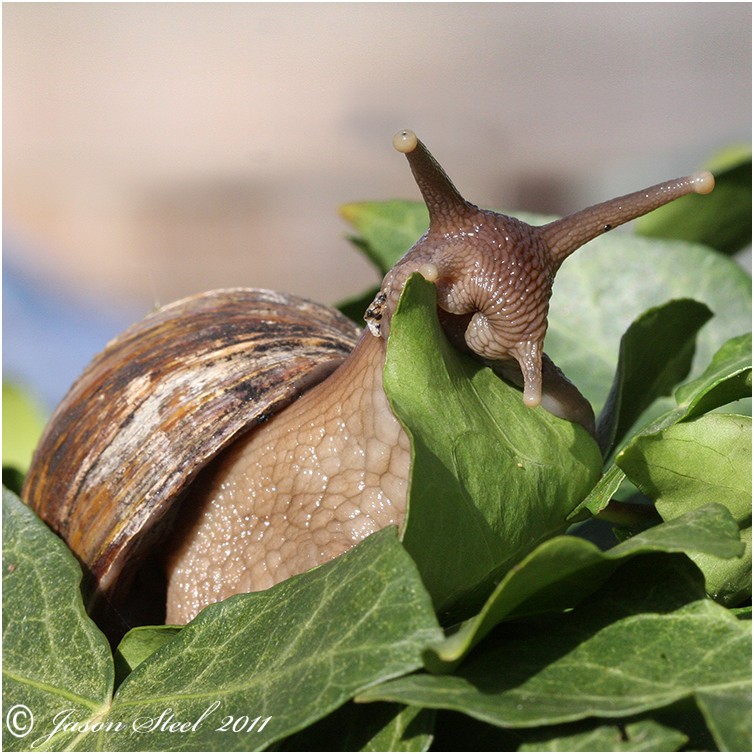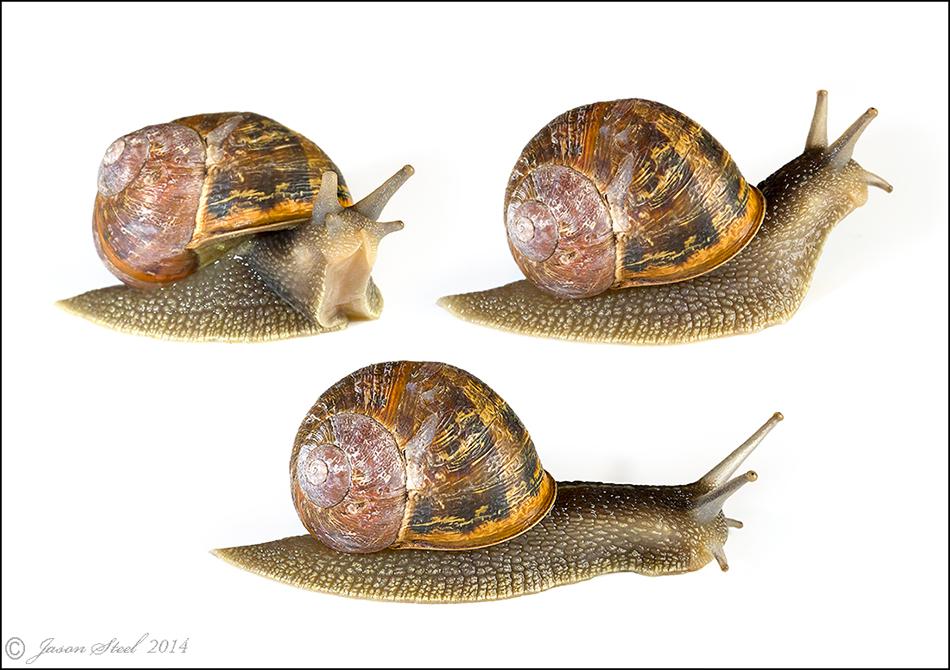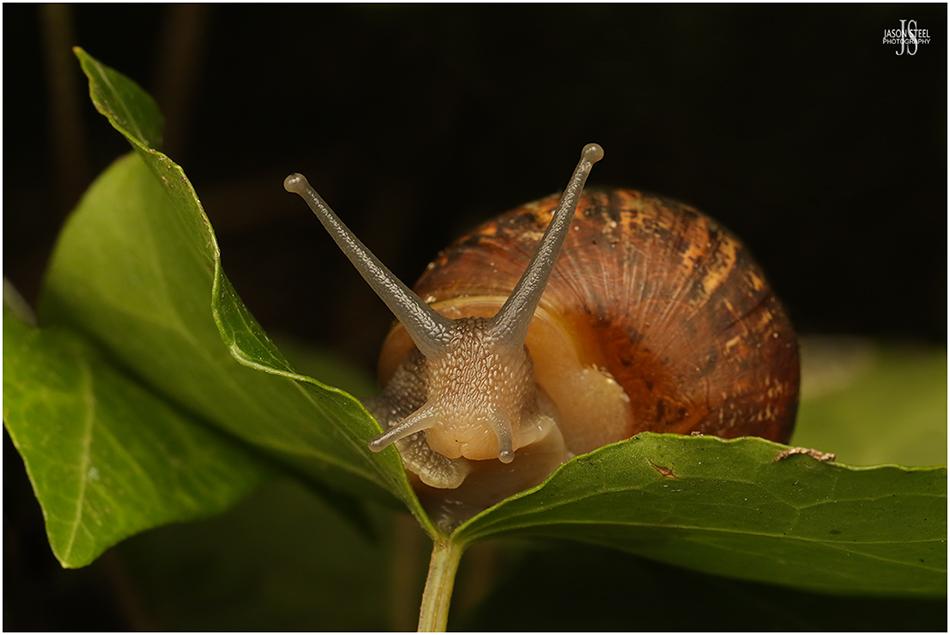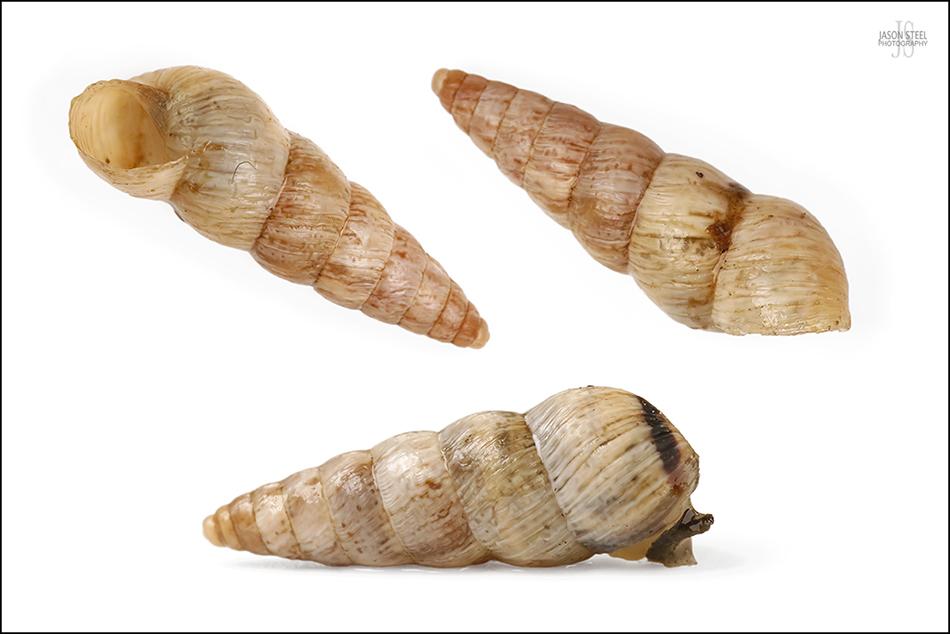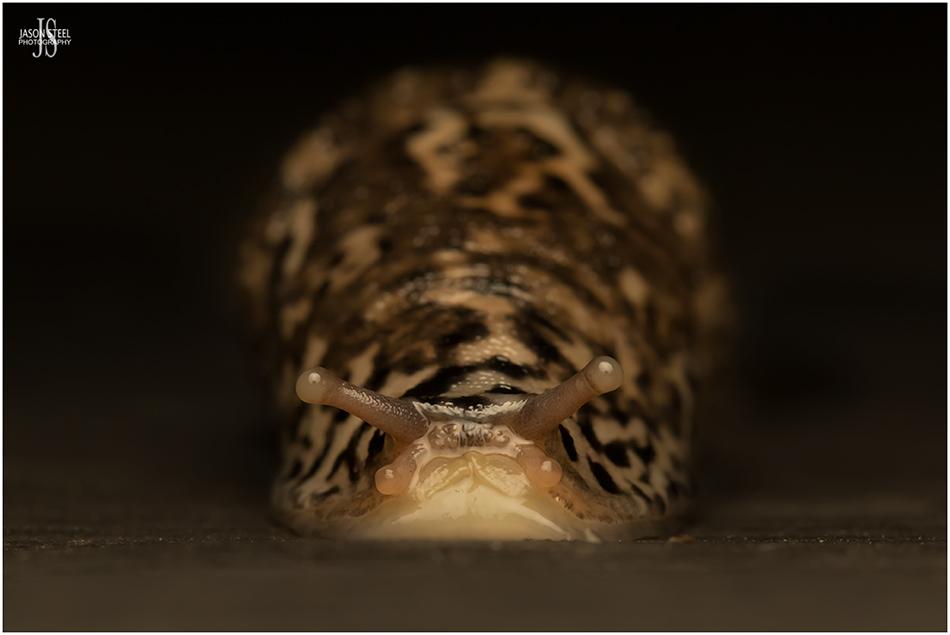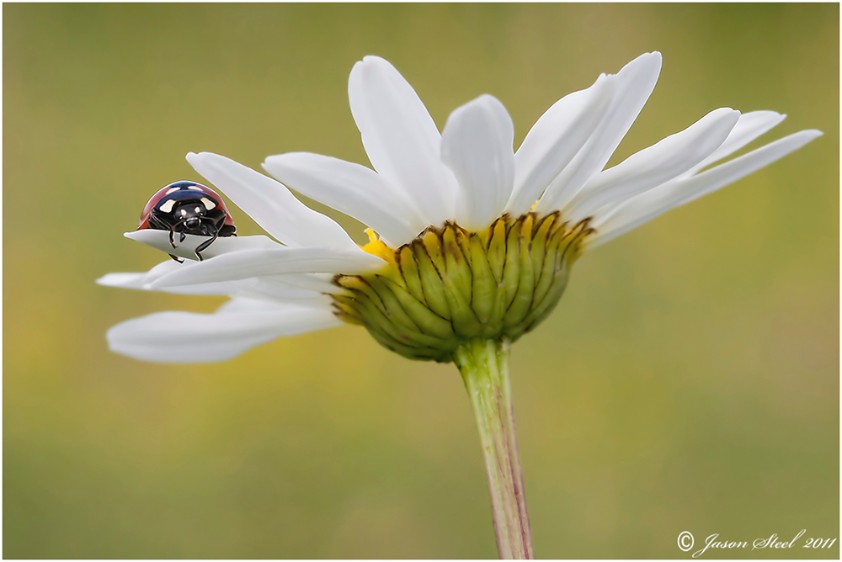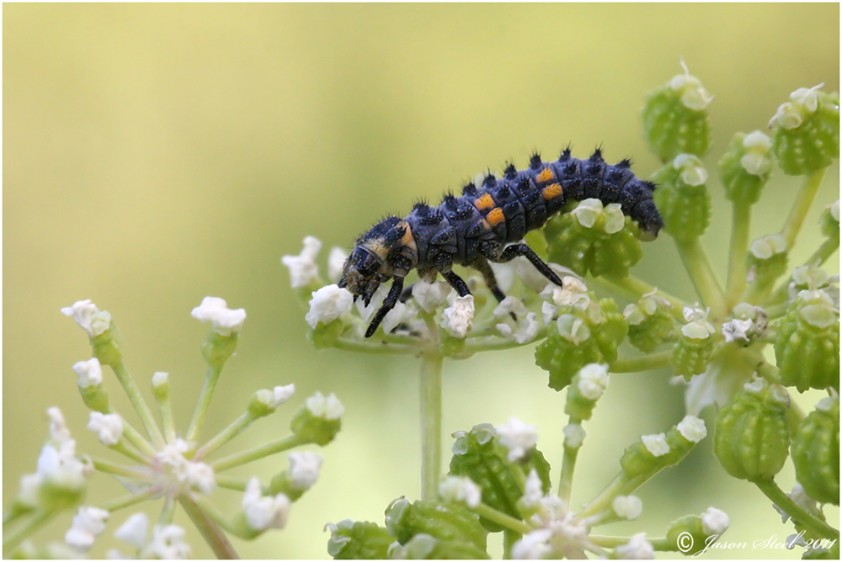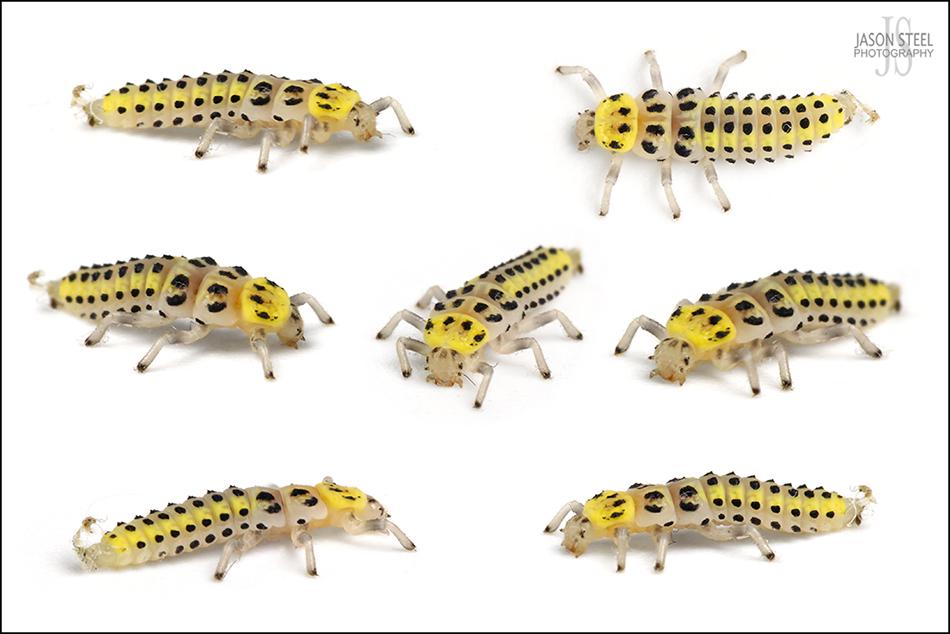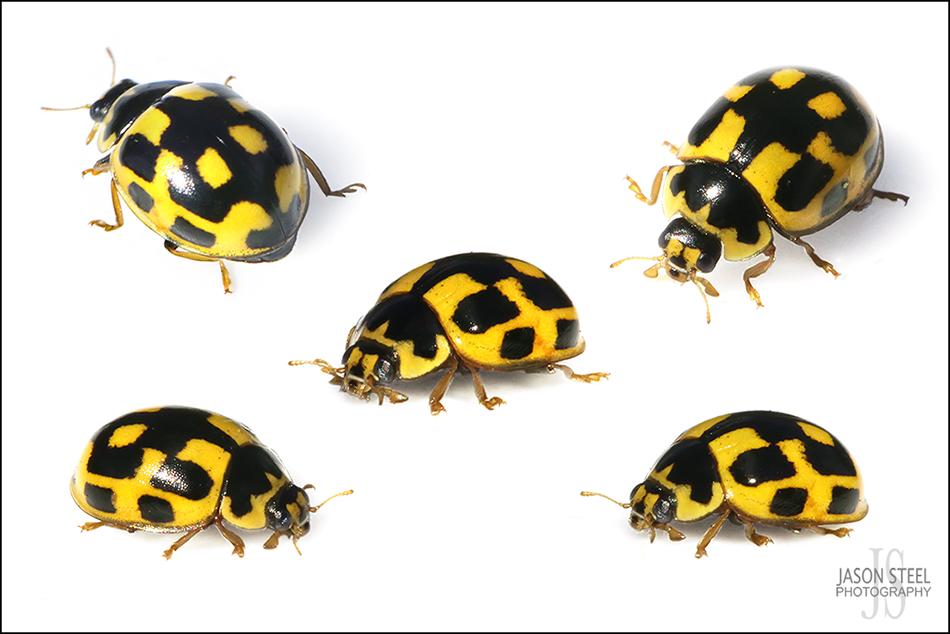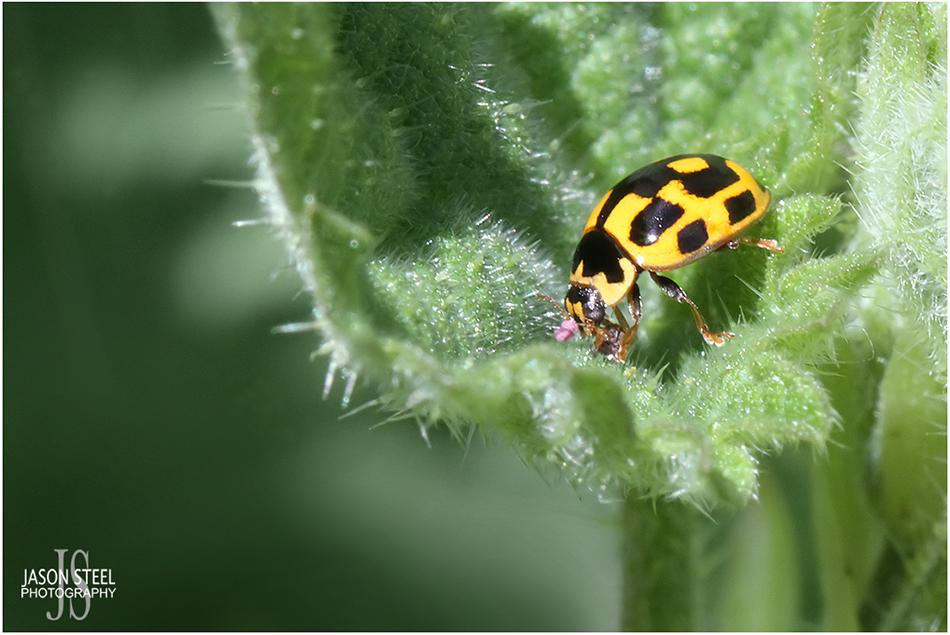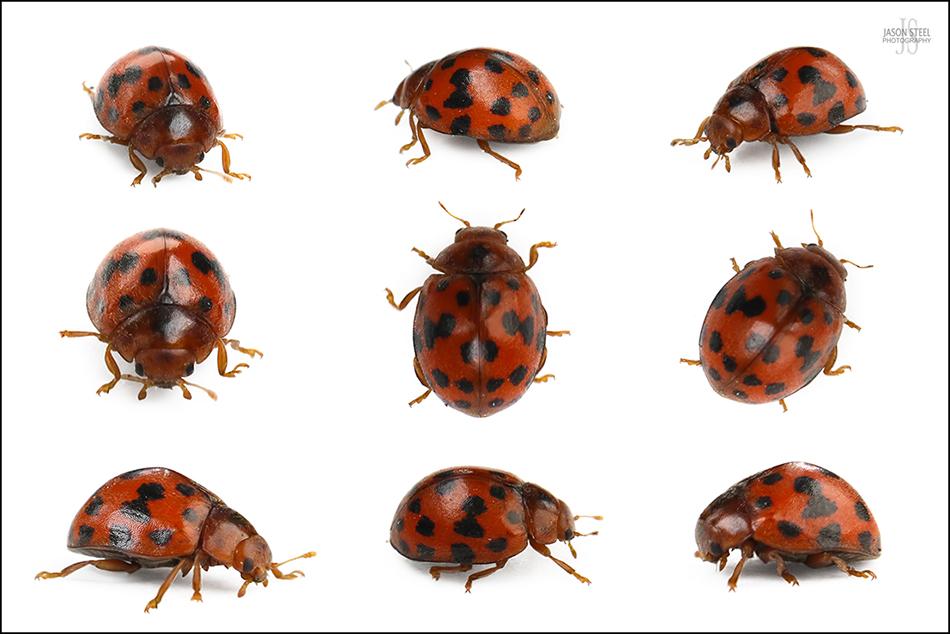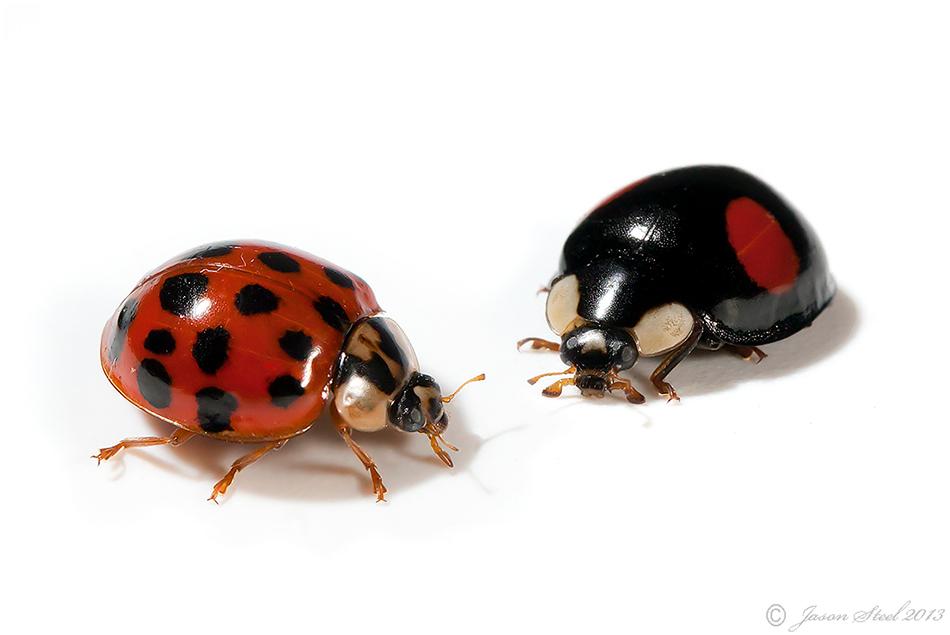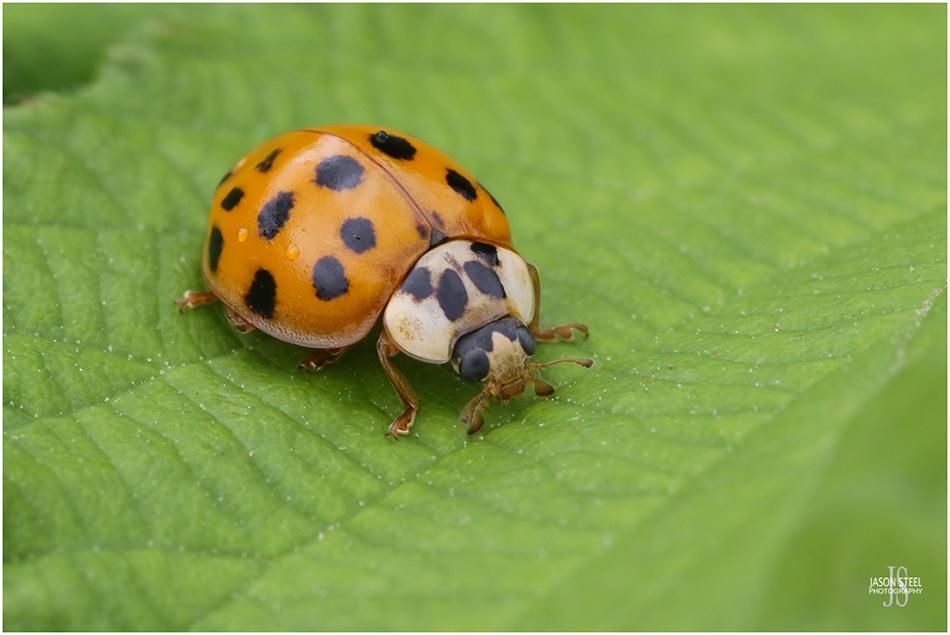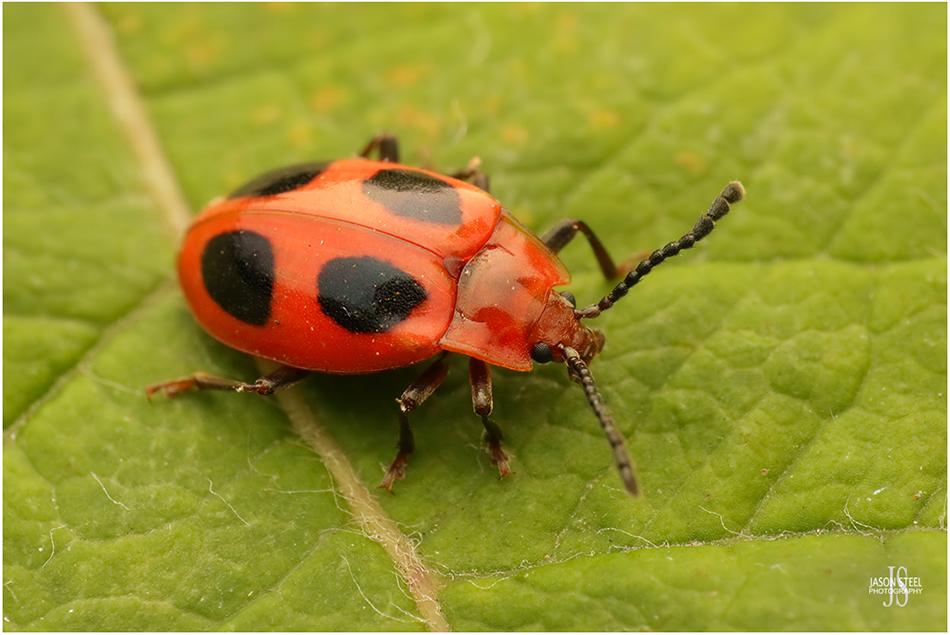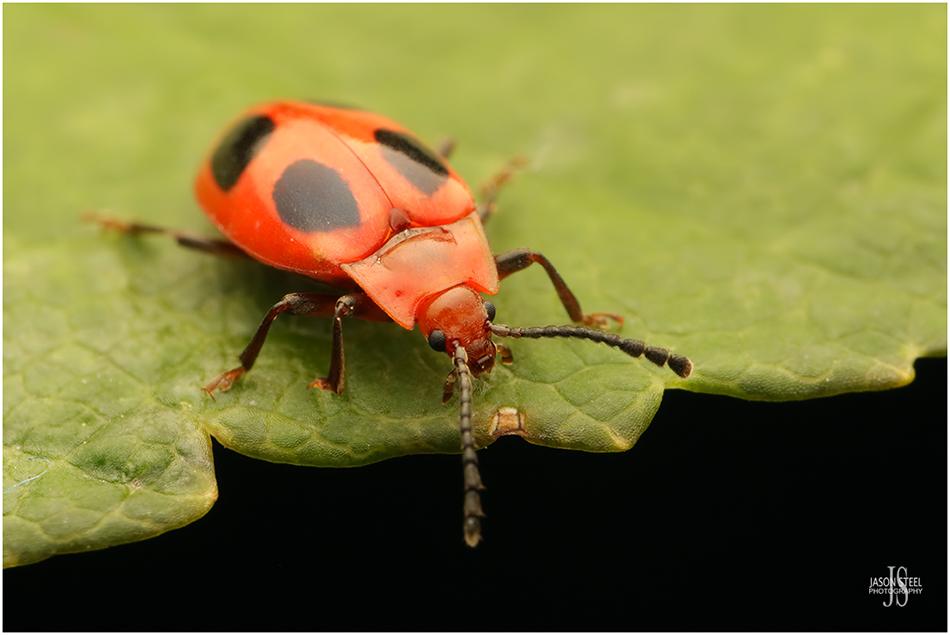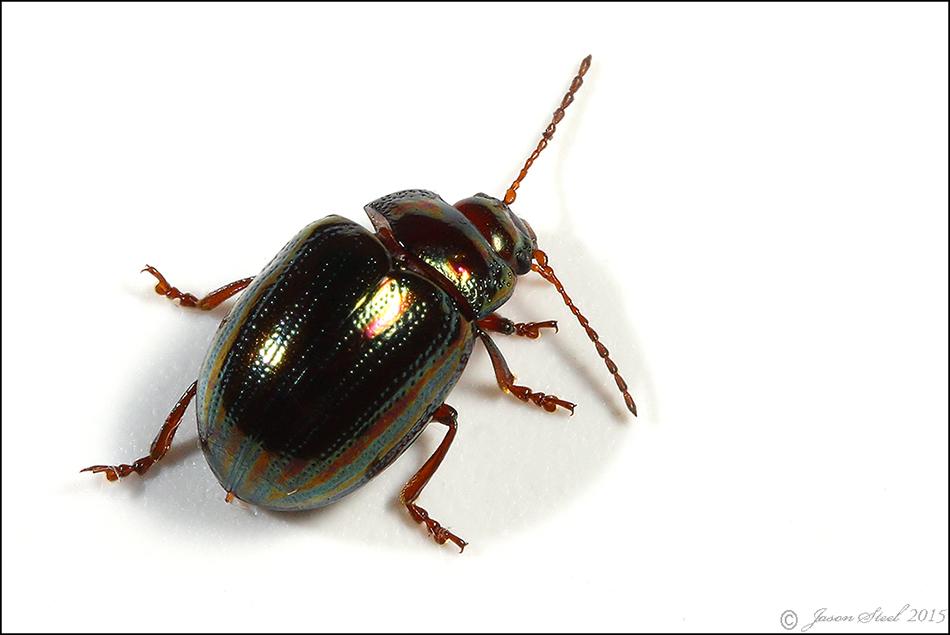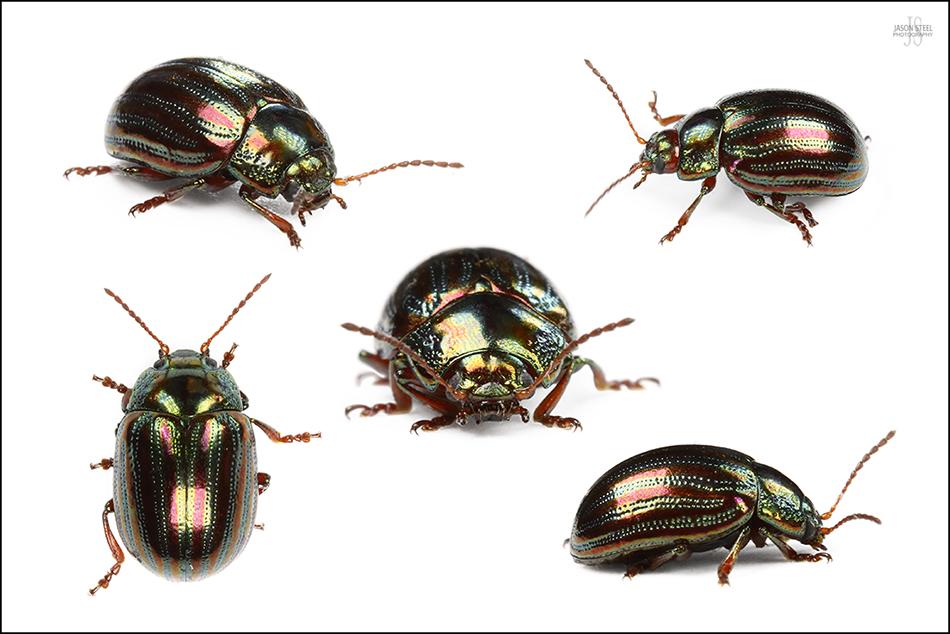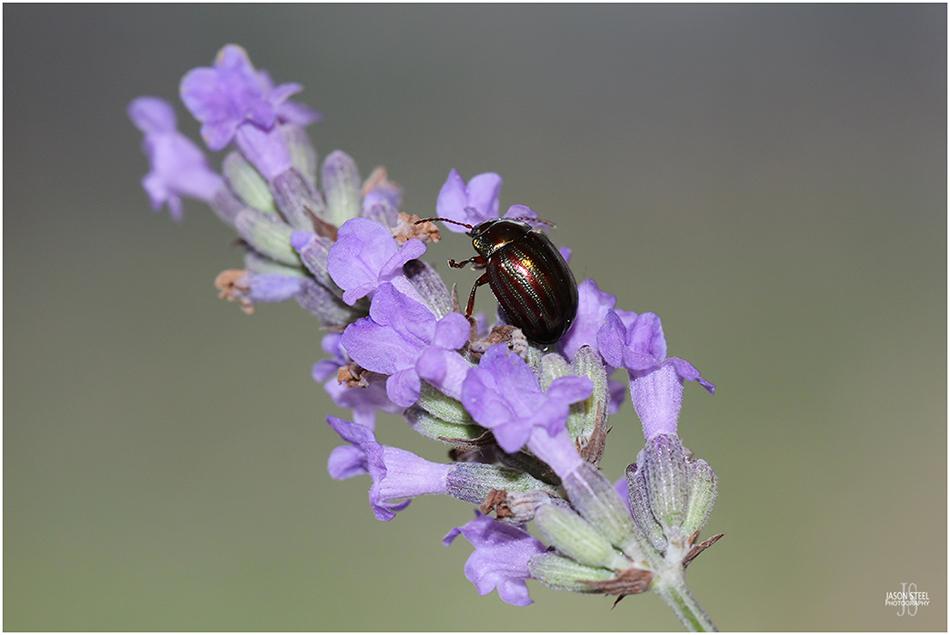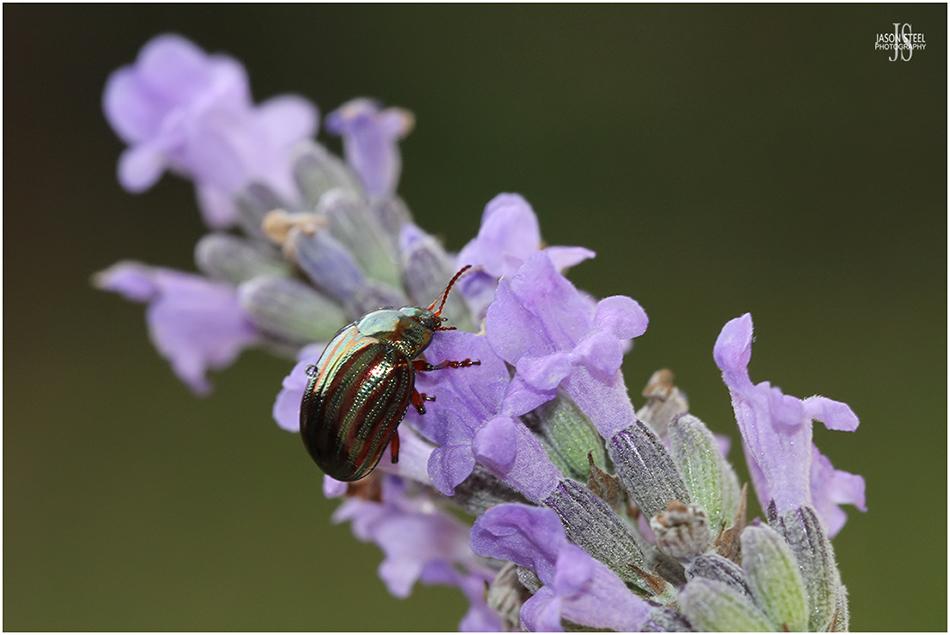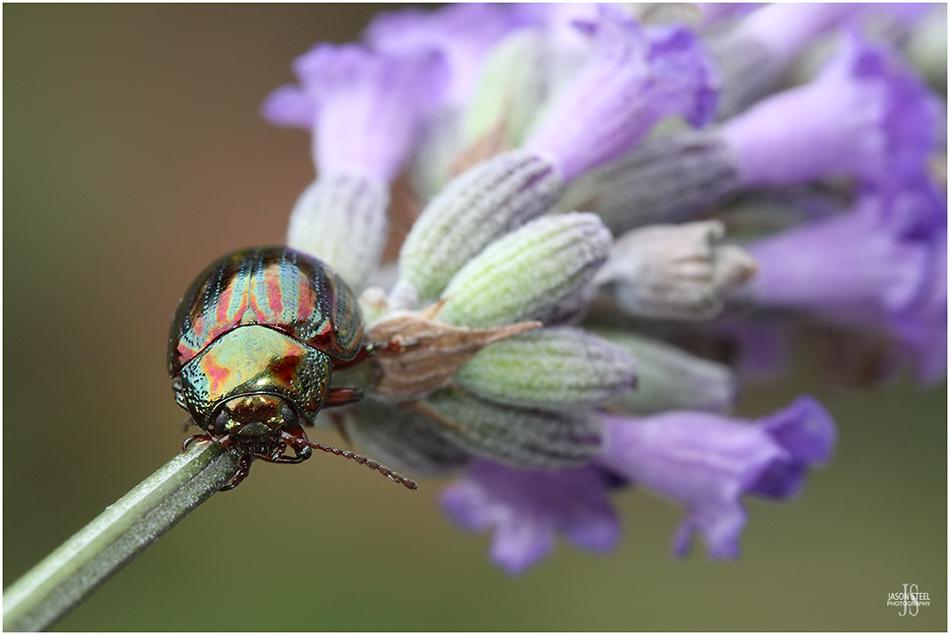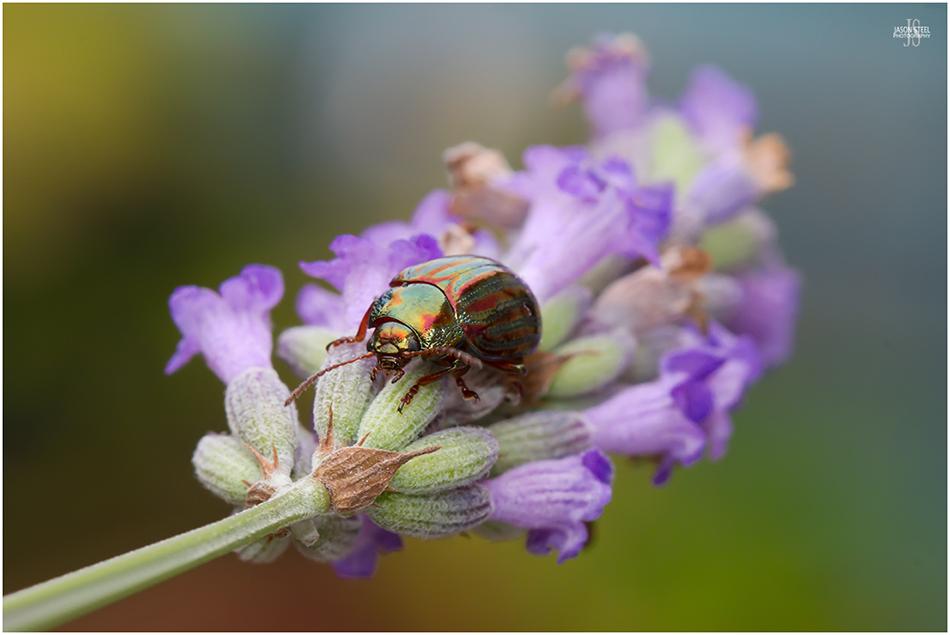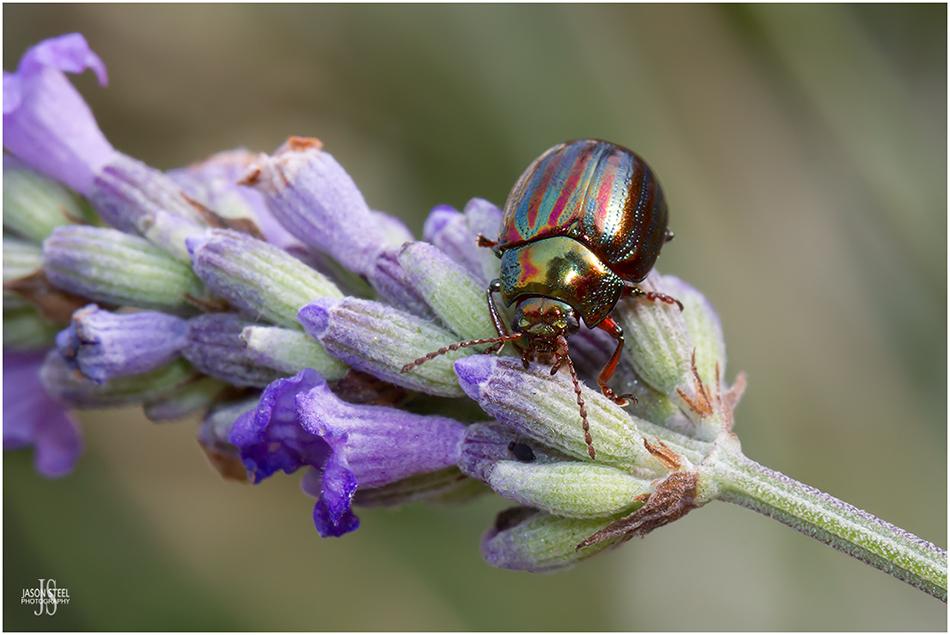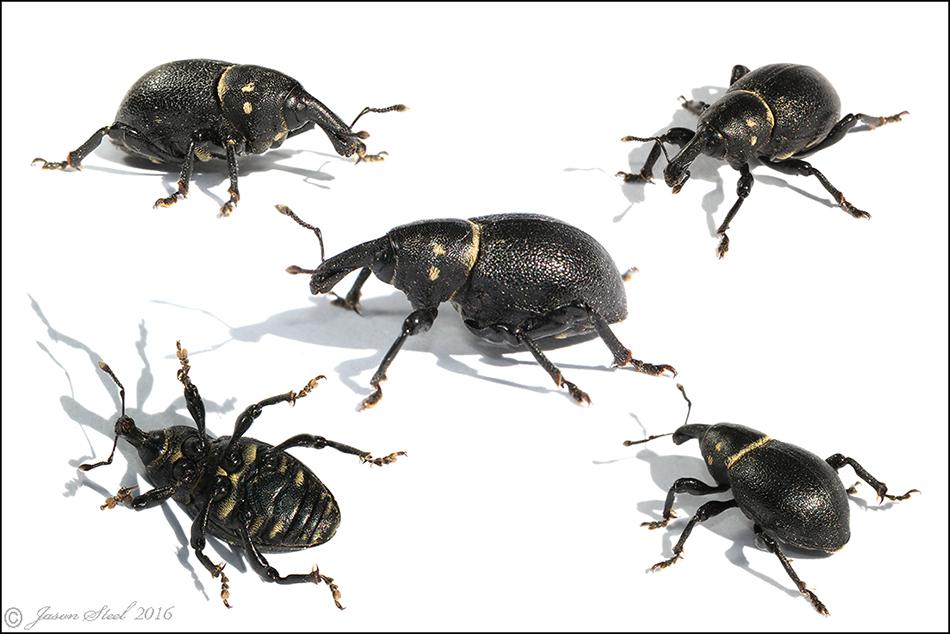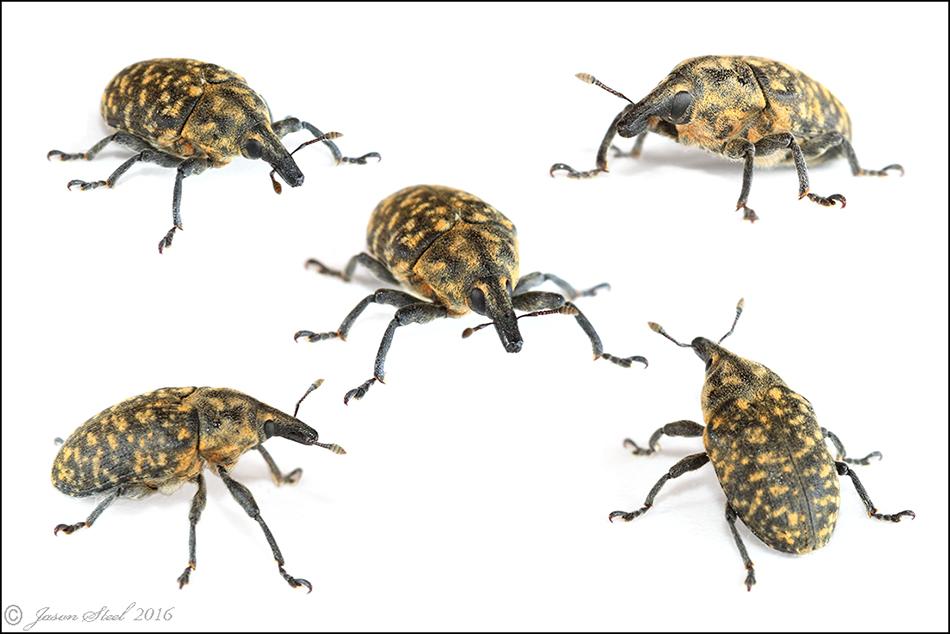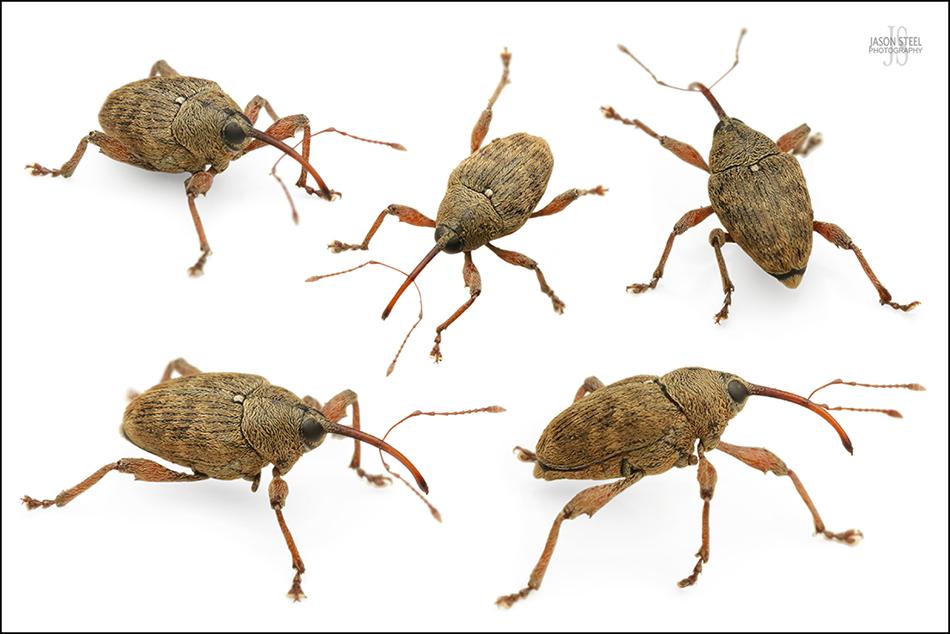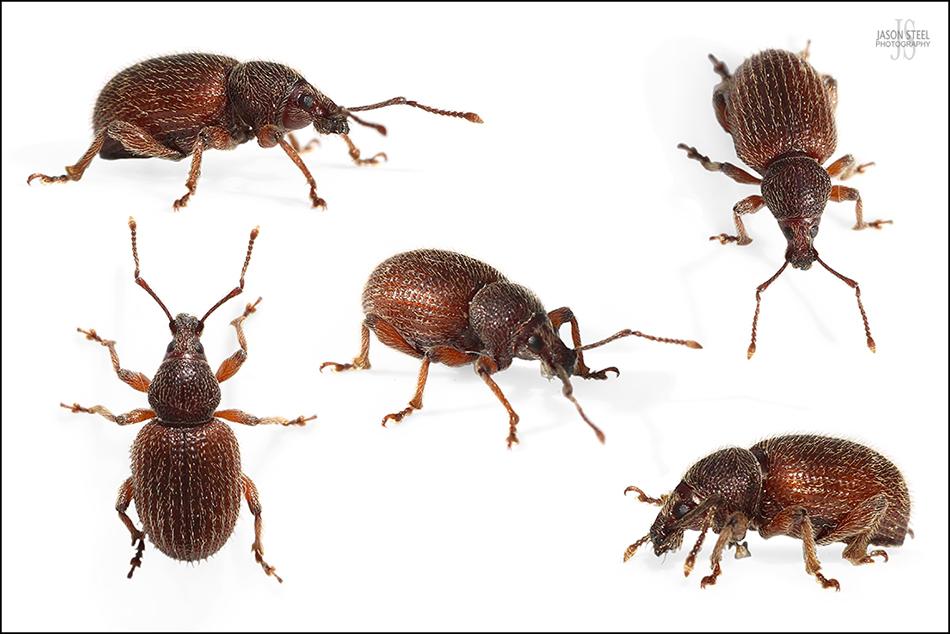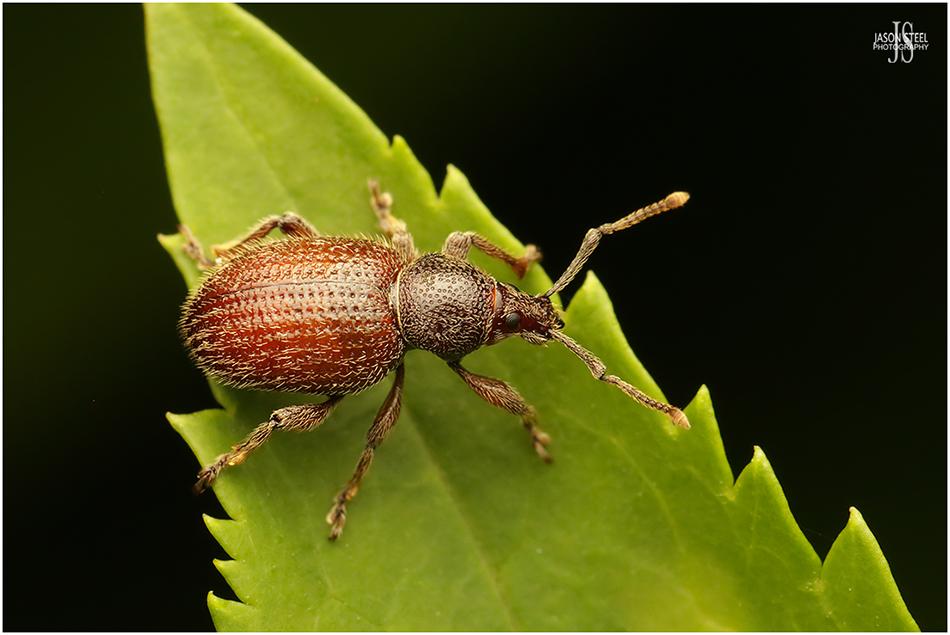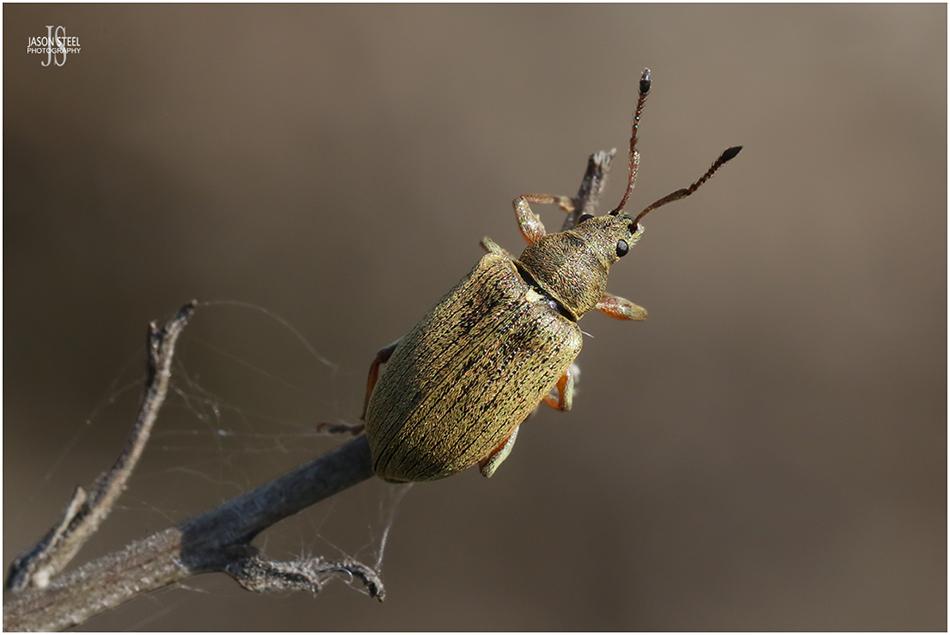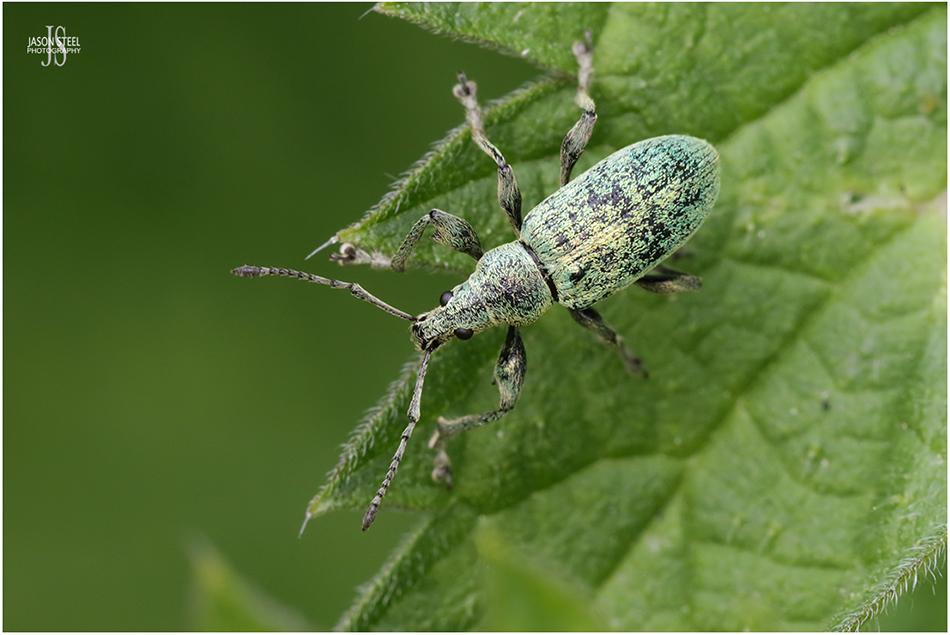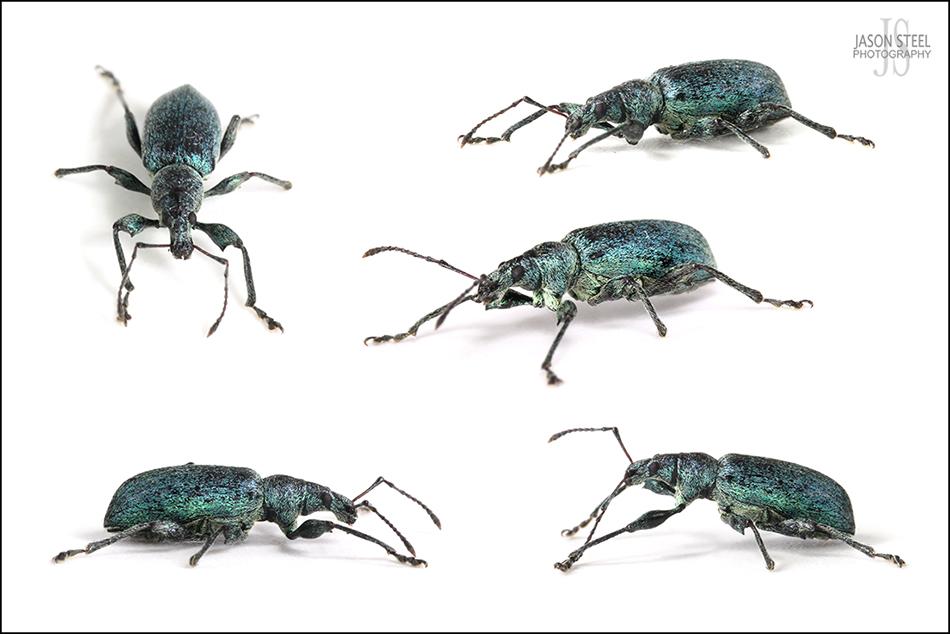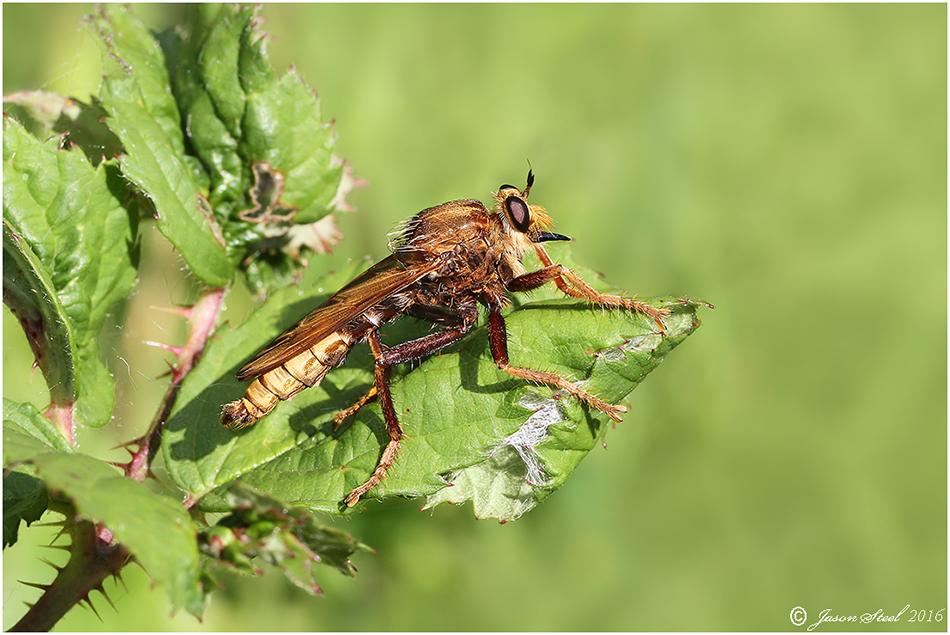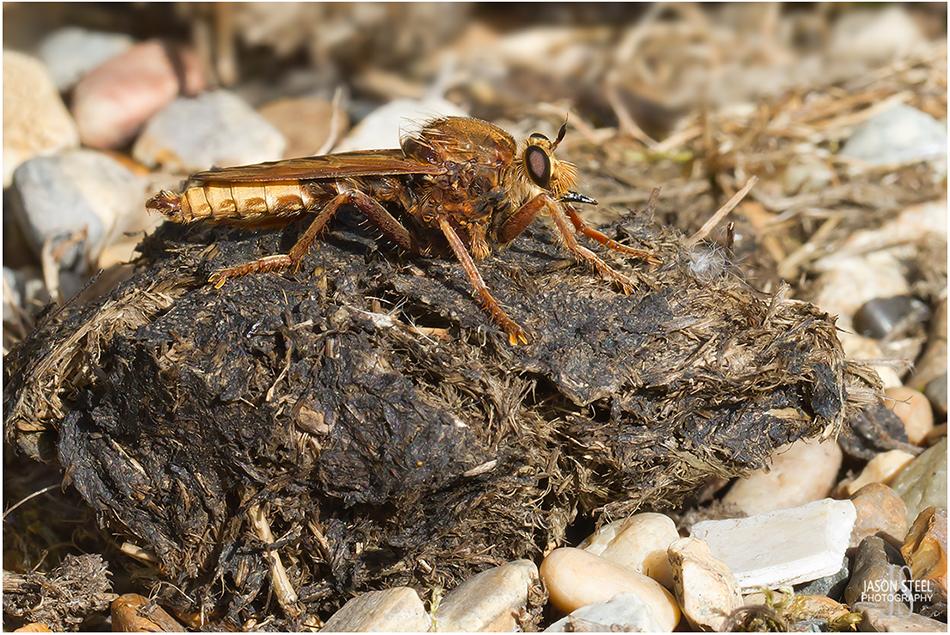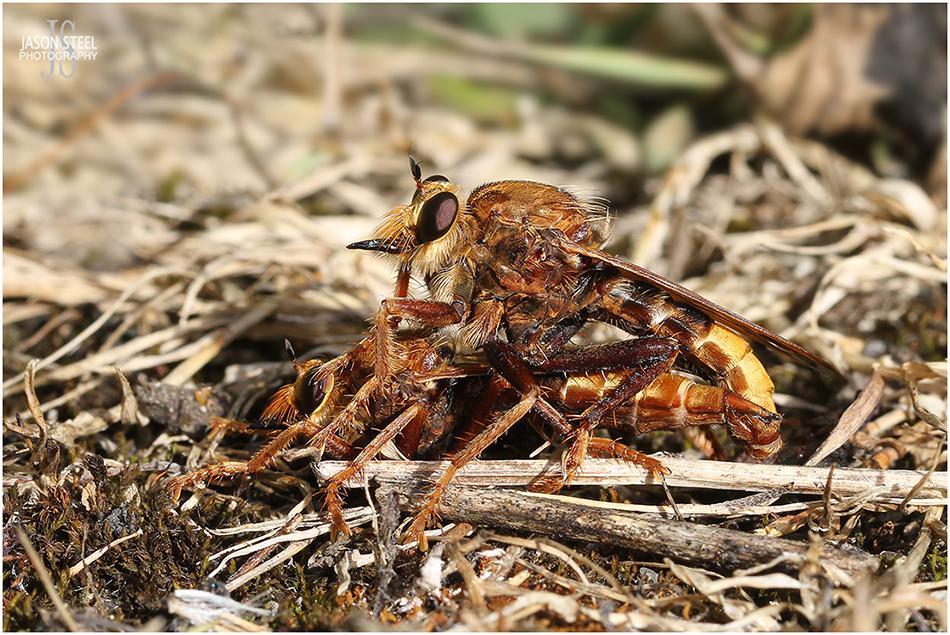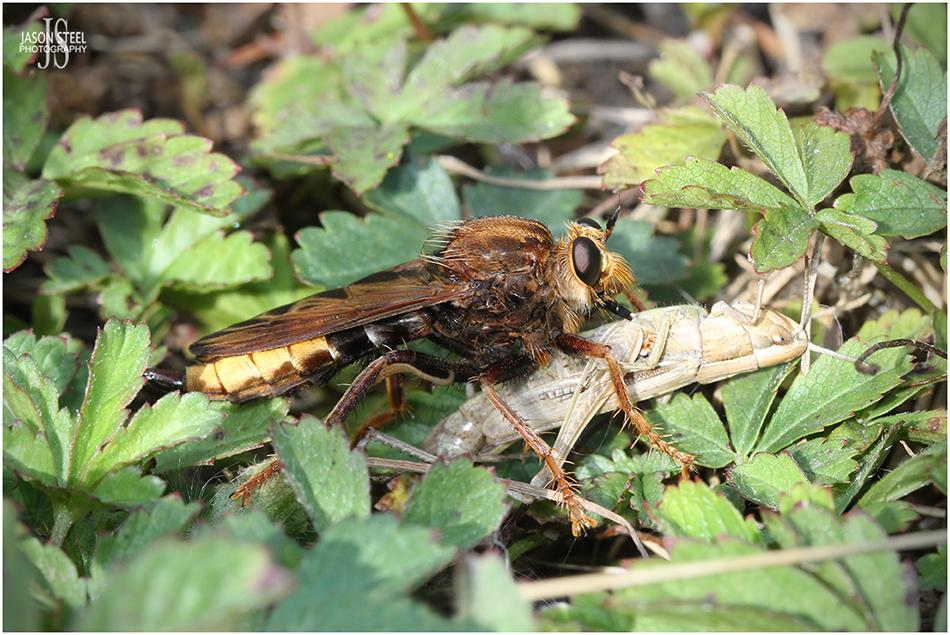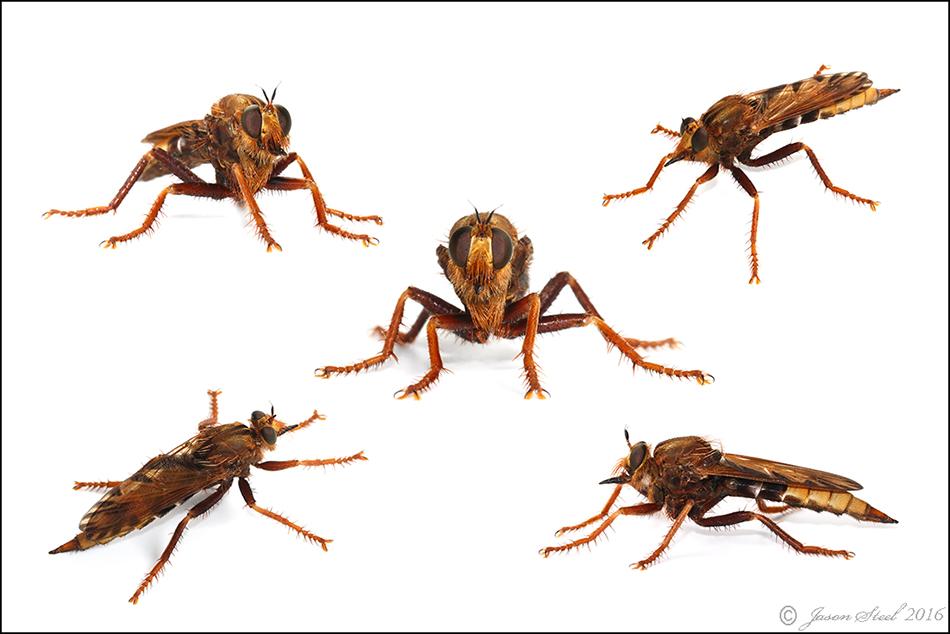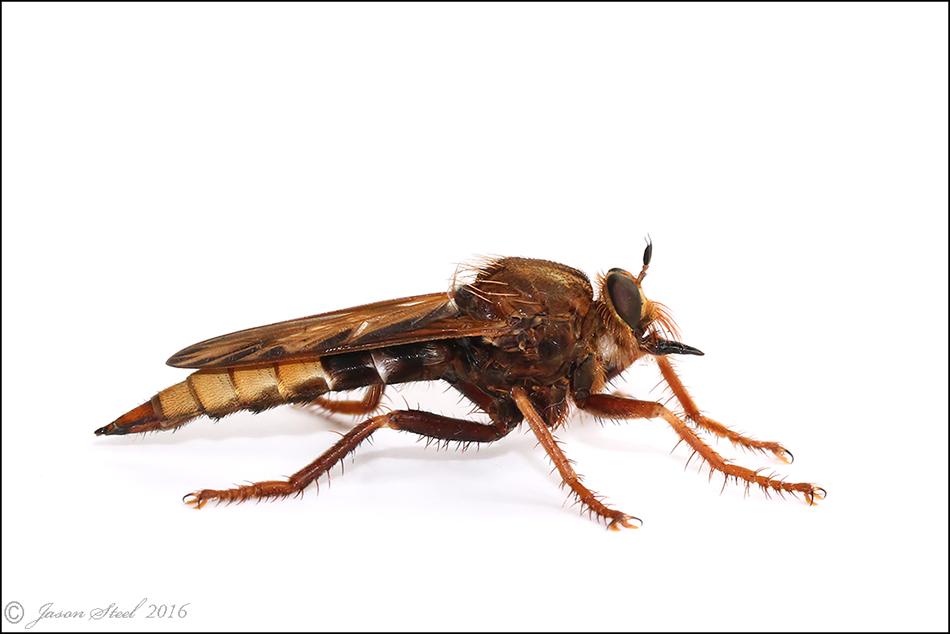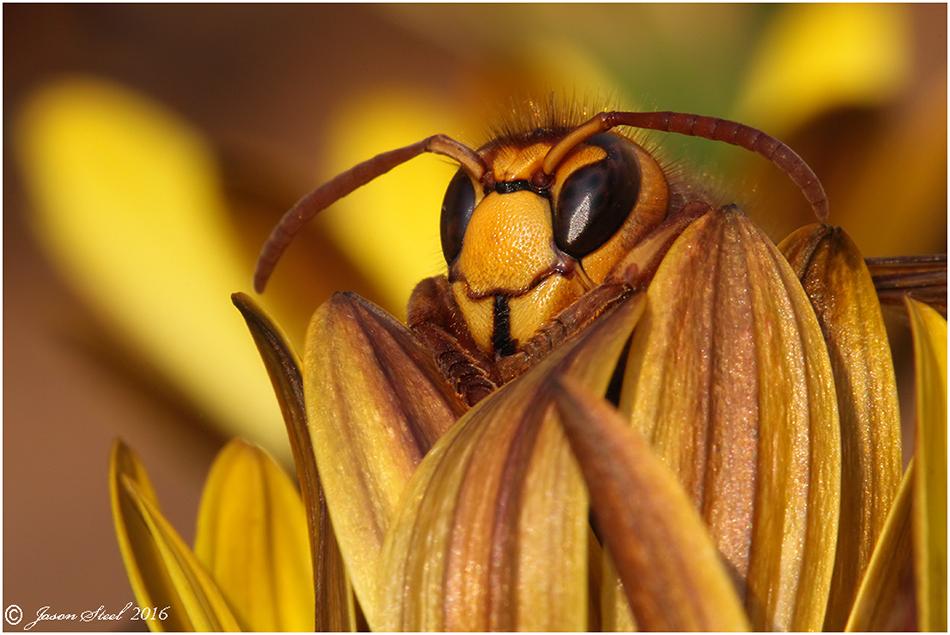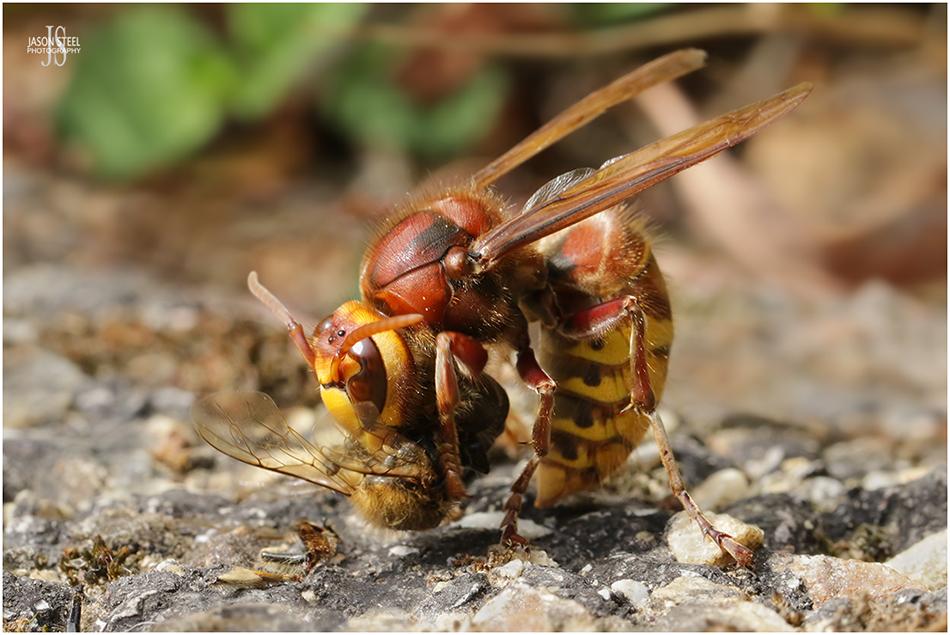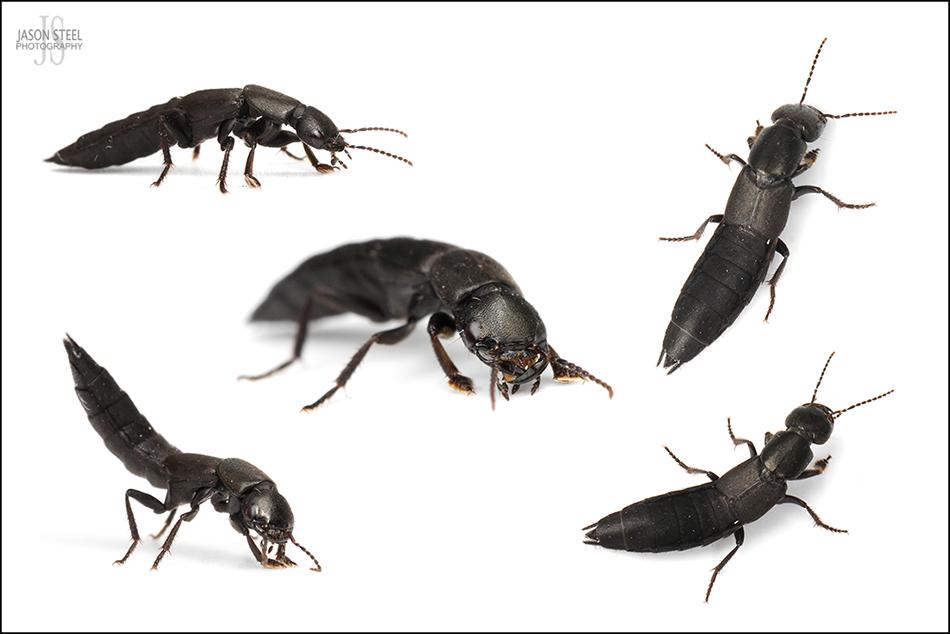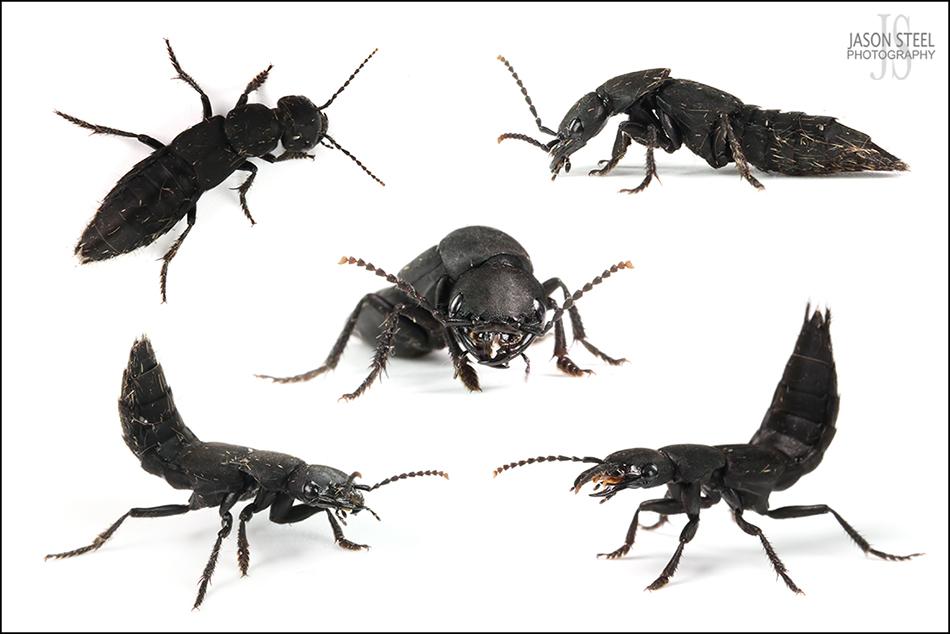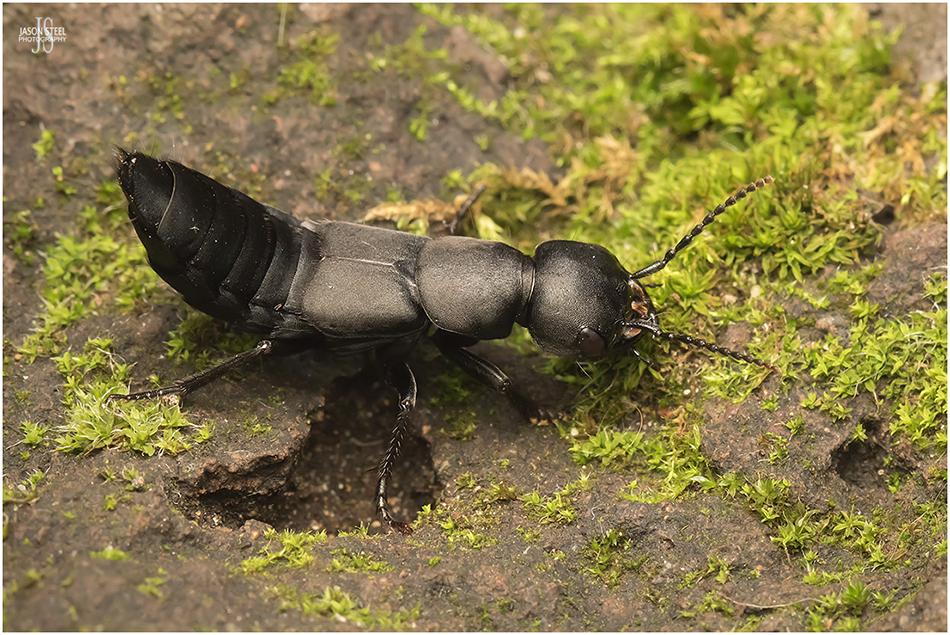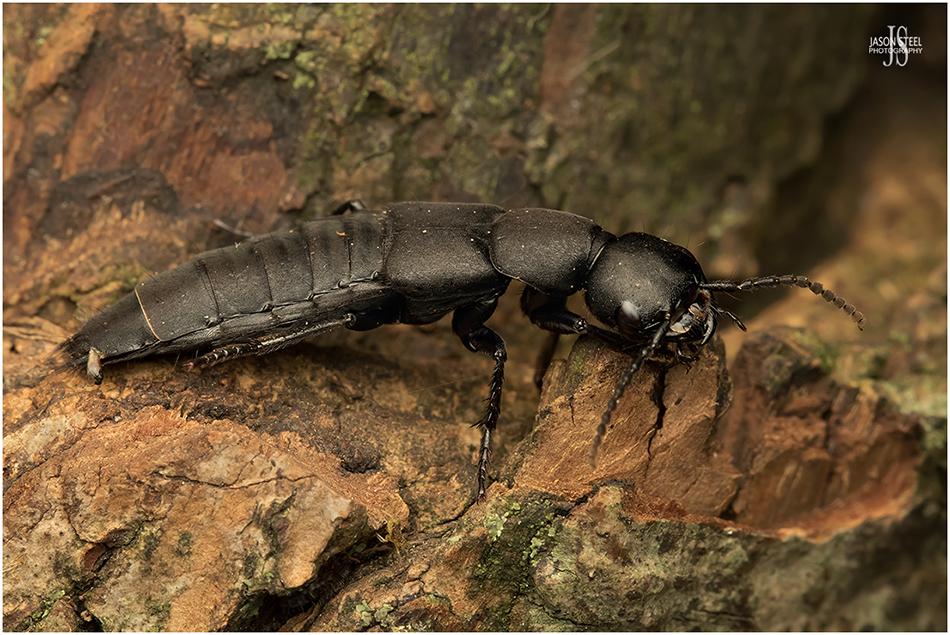European / Western Honey Bee (Apis
mellifera)
The workers gather the nectar for the production of honey. On average, a 450g jar of honey requires 1152 bees to travel 180,246km and visit 4-5 million flowers. That's 156km per bee!
The Honeybee is the only species of bee that dies after stinging. Its sting gets trapped in its victim and is ripped out of the bee as it attempts to flee. The Honeybee's sting is attached to other internal organs and the removal of the sting causes the Honeybee severe internal damage. However the queens do not have barbed stings and are therefore able to sting repeatedly if necessary.
Bumblebee (Bombus sp.)
There are around 19 different species of Bumblebee and 6 species of Cuckoo Bumblebee found in the UK. They are generally black with varying degrees of orange, yellow or white coloured bands. These are social bees and live in nests underground usually consisting of around 200 specimens. The queens hibernate underground and emerge in spring. They quickly set about finding a suitable nesting site such as an abandoned mouse hole. The queen initially lays around a dozen eggs which hatch to provide her with a colony of workers. The workers gather pollen and nectar which is stored and used to feed the next batch of young. At the end of the season new queens and males will emerge and mate. The rest of the colony will die off over winter but the new queens will hibernate and emerge the following spring to start the cycle again.
Bumblebees are not aggressive. Only the females are capable of stinging but will only do so if threatened. The rumour that Bumblebees die after stinging is not true. This is only true of Honeybees. Bumblebees can sting repeatedly if necessary but very rarely do.
Common Carder Bee (Bombus pascuorum) photographed in my garden in SE London 27th August 2017
Common Carder Bee / Brown-Banded Carder Bee (Bombus pascuorum)
The Common Carder Bee is one three species of all ginger Bumblebee and is the only one of those three that is common and widespread across the UK and can be found in a variety of habitats where suitable nectar and pollen are available. Common Carder Bees make nests above the ground in tall grassland, under hedges and in piles of leaf-litter. As with other species of Carder Bee the nests are covered in moss and dry grass that have been gathered together. The nests are small and usually only have 60-150 workers which can still be found as late as September or even October.
Female Chocolate Mining Bee / Hawthorn Bee (Andrena scotica)
Damselfly
In Great Britain and Ireland there are about 20 species of damselfly commonly found.
Large Red Damselfly (Pyrrhosoma nymphula)
The Large Red Damselfly is the larger of our two red species. The smaller of the two being the Small Red Damselfly obviously. Apart from the size the other obvious distinguishing features are the reddish / orange legs and wing-spots (pterostigma) of the Small Red Damselfly as opposed to the black legs and wing-spots of the Large Red Damselfly.
The Large Red Damselfly has a body-length of 33-36mm and is common and widespread across the UK and can be found at most types of wetland habitat, with the exception of fast-flowing water. This species is usually one of the first damselflies of the year to appear and can often be seen from mid-April until the end of August. Females can sometimes be almost entirely black in colour. The Large Red Damselfly can sometimes be found quite some distance from its breeding site and is often seen in grassland and woodland.
The Small Red Damselfly is a far rarer species and is generally confined to the heathlands of South England and West Wales.
Large Red Damselfly (Pyrrhosoma nymphula) photographed in my garden in SE London, 11th June 2020.
A mating pair of Common Blue Damselflies (Enallagma cyathigerum). Photographed at a wild pond in SE London, 13th May 2020.
Common Blue Damselfly (Enallagma cyathigerum)
Male Willow Emerald Damselfly, Chalcolestes viridis, photographed at a large pond in North Kent, 30th August 2022.
Willow Emerald Damselfly - Chalcolestes viridis
The
Willow Emerald Damselfly is a medium / large-sized damselfly. This species has recently colonised the UK. There is some dispute as to when it was first recorded in the UK, with some sources claiming that it was first seen in East Sussex in 1979, whilst others claim that it wasn't recorded in the UK until it turned up in Felixstowe in 2007. What is definite is this species has been spreading since 2009, after first becoming established in the SE of England, and has now been recorded in much of the eastern side of England. This species can be distinguished the Common Emerald Damselfly,
Lestes sponsa, and other Emerald species, by its longer, thinner body, large cream coloured wingspots, prominent green spur on the side of the thorax, and the lack of the dusty blue pruinescence. -
Identifying the Emerald Damselfly species.
The Willow Emerald Damselfly is regularly seen on low branches of Willows or Alder Trees, as they overhang fresh still water sources, such as large ponds. The female injects her eggs into twigs of Willows or Alder Trees. These appears as rows of small horseshoe-shaped swollen galls on the twigs. Males reach a total length of 42-47mm, and the slightly smaller female reaches 39-44mm. Adults can usually be seen from May / June until autumn, sometimes as late as the end of November.
Male Willow Emerald Damselfly, Chalcolestes viridis, photographed at a large pond in North Kent, 30th August 2022.
Male Willow Emerald Damselfly, Chalcolestes viridis, photographed at a large pond in North Kent, 30th August 2022.
Female Willow Emerald Damselfly, Chalcolestes viridis, photographed by a large lake in a North Kent public park, 16th September 2023.
Female Willow Emerald Damselfly, Chalcolestes viridis, photographed by a large lake in a North Kent public park, 16th September 2023.
The Garden Snail
The Garden snail is found all over the UK. They have a taste for green plants and are considered as garden pests by most gardeners. Garden snails are hermaphrodites which means that they are equipped with both male and female reproductive organs. Although they are cable of mating with themselves they usually mate with a partner. In periods of very little or no rain the snail can seal the entrance of their shell with a crusty mucus and go into a state of suspended animation until the rain returns. This state can be maintained for several months if necessary.
Identifying Land Snails in the UK
Garden Snail photographed "in-situ" in my SE London garden, 18th August 2021.
17 & 18mm Pointed Snails (Cochlicella acuta), found at Corfe Castle, Dorset, 20th July 2021
Pointed Snail / Pointed helicelid / Conical Snail - (Cochlicella acuta)
The Pointed Snails consists of three species in the Cochlicella genus in the UK. Cochlicella acuta are the largest, growing to a typical shell length of 10-20mm. They are more commonly encountered at coastal grassland sites, dunes, sandy & limestone habitats, particularly in the south and west of the UK. The overall appearance is highly variable but the shells are generally pale and sometimes have brown markings and a brown ring at the base. C. conoidea and C. ventricosa are also similar and native to the UK but are both smaller. C. barbara is a similar but introduced species at a few sites in the SW of England but has a stouter shell.
The specimens in the image above were just a couple of the many specimens found at Corfe Castle in Dorset, attached to everything from grass, rocks and fenceposts. During the dry summer months these snails aestivate, and enter into a period of inactivity and low metabolic function, whilst waiting for the wet conditions in which to move, feed and breed again.
Leopard Slug in my SE London garden, 9th September 2021
Leopard Slug / Great Grey Slug (Limax maximus)
There are around 30-40 species of slug in the UK and the native Leopard Slug is one of Britain's largest, regularly growing to around 150mm, and sometimes 200mm. The front section of the slug has a marbled effect whilst on the back of the slug most specimens exhibit a series of black spots, often in lines. These markings can be highly variable with some specimens having no spots or even one to three pale dorsal stripes instead of dark stripes. Whilst most slugs are regarded as garden pests Leopard Slugs are omnivorous and cause minimal damage to plants. They feed mainly on decaying matter. They will feed on carrion where available and they'll also chase down other slugs to feed on at the speed of 6 inches per minute! Whilst this may seem very slow compared with other predators 6 in/min is rapid by slug standards.
Leopard Slugs have an unusual mating process where after circling each other copulation occurs whilst both slugs are suspended in the air from a mucus string. This allows gravity to help the slugs extend their large blue penises from openings in their heads. Slugs are hermaphroditic, meaning they have both sexual organs, so after mating both slugs are able to lay fertilised eggs. These slugs can live for around three years.
Some sources claim there are an additional five slug species in the UK, from the Testacella and Selenochlamys genus, that are mainly predatory, adapted to feeding on earthworms but also eating other slugs too. However I've also seen photos of the Dusky Slug, Arion subfuscus, feeding on earthworms too, so the other two introduced Arion species may also be predatory.
Ladybirds
There are around 40-50 different species of Ladybird here in the UK. The most common is the seven-spot Ladybird. Most species of Ladybird are carnivorous and are considered a gardener's friend feeding on aphids, greenfly, small caterpillars, mites and various other garden pests. Some species feed on herbaceous plants and a couple feed on mildew.
Identifying Ladybirds
The Ladybird starts life as part of an egg cluster fixed to a leaf. The black larva hatches just 3-4 days after the eggs are laid. The larva usually turns into an adult Ladybird within 3-4 weeks. A single Ladybird may consume as many as 4000 aphids during its lifespan.
14-Spot Ladybird (Propylea quatuordecimpunctata)
The 14-spot ladybird is a small ladybird species that grows to 3.5 - 4.5mm in length and feeds on soft-bodied insects, larvae and insect eggs. This is the most commonly seen yellow / black species of ladybird and can have between 4 and 14 black or yellow spots. These spots are almost rectangular in shape but can vary. Adults are active from May to September in all habitats but are commonly found on broadleaf trees and shrubs. This species overwinters as an adult, often with other species, and emerges later than many other species.
An early emerging 14-Spot Ladybird on a very warm April day in a grass maedow in SE London, 16th April 2017
3mm female 24-Spot Ladybird (Subcoccinella vigintiquattuorpunctata), 8th June 2021, SE London.
24-Spot Ladybird (Subcoccinella vigintiquattuorpunctata)
The 24-Spot Ladybird is the smallest of our Ladybird species in the UK growing to just 3-4mm in length. The entire ladybird is a dull red / orange colour including the legs, pronotum, head and elytra and due to its colour & size this ladybird is unlikely to be confused with any other species. Although widespread in England and Wales this species is less frequently recorded than other species, but that may just be down to its size. This species is entirely vegetarian and feeds on Red Campion and False Oat Grass, although it is regularly found on various grasses and other low vegetation such as thistle, nettle and knapweed. The number of spots can vary from 0 to 24, with 20 being the average number. Many specimens in the UK are wingless and unable to fly.
This 3mm adult female pictured above was one of a mating pair found at the top of long grass in a field in SE London.
Harlequin Ladybirds (Harmonia axyridis)
The Harlequin Ladybird is a large species growing to around 7-8mm, and sometimes reaching 10mm in body-length. Its appearance can be very variable, as the image above shows. The typically brown legs help to distinguish it from similar species. For many years this ladybird has been used as a biological control of aphids. The Harlequin Ladybird became fully established in the UK in 2004 and spread rapidly. It is now considered to be the most invasive ladybird species, and even one of the most invasive invertebrates on earth, and it feared that its success comes at the cost of some native ladybird species. Not only is it larger than most native ladybirds, which it will prey upon, but it can also thrive in a huge variety of habitats. The Harlequin Ladybird is known to carry a parasite, which it is immune to, but which effects native ladybird species. Adult Harlequin Ladybirds fly readily and are therefore able to disperse and spread quickly. Adults overwinter, often around buildings, and emerge in early spring as soon as the temperature reaches around 10 degrees.
LINK 1 LINK 2 LINK 3
8mm Harlequin Ladybird on low vegetation in Cliffe, Kent. 30th June 2023.
4mm False Ladybird Beetle, Endomychus coccineus, found on metal railings at the edge of SE London woodland, 15th August 2023.
False Ladybird Beetle / Scarlet Endomychus - (Endomychus coccineus)
The False Ladybird Beetle is a very convincing imposter. This small beetle grows to around 4 - 6.5mm in length, about the same size as many ladybird species. With its bright red colouration and four large, black spots on its elytra, this beetle could easily be mistaken for a Ladybird. Very occasionally these black spots can be completely absent. The False Ladybird Beetle is from the Endomychidae family known as the ‘Handsome Fungus Beetles’, which is represented by 8 species in the UK. Unlike Ladybirds, which are predators of aphids and other small invertebrates, the False Ladybird Beetle, like other members of its family, feeds on fungi, both as a larvae and as an adult beetle. You may be asking why would this beetle want to impersonate a Ladybird? The aposematic colouration of Ladybirds warns potential predators that many species of Ladybirds have a very bitter taste, and contain toxins that make them unpalatable for many predators. The False Ladybird Beetle contains no such toxins and its colouration is a complete bluff. In the UK the False Ladybird Beetle has a scattered distribution but where it occurs it may be locally common. Adult beetles have been observed mating in September and October. In April and May the larvae can often be found in groups under loose bark of fallen, and fungi-infected, trees.
The False Ladybird Beetle is fully winged and capable of flight. This beetle is largely nocturnal and is largely associated with woodland, where it is often found around fungi, on logs and on trees. Fungi growing around old Birch and Beech tree stumps are particular favourites of the False Ladybird Beetle. Adult beetles can be found all year round but peak in August and September.
4mm False Ladybird Beetle, Endomychus coccineus, found on metal railings at the edge of SE London woodland, 15th August 2023.
7mm Rosemary Beetle found resting on a UPVC door in Erith, SE London, 21st October 2013
Rosemary Beetle (Chrysolina
americana)
The Rosemary
beetle is small, but very beautiful beetle, originally from Southern Europe, North Africa and the Middle East, that has been recorded in SE England since 1994. It has now spread across much of SE England and is considered to be an invasive garden pest, in both larvae and adult form, that feeds on the foliage and flowers of various aromatic plants including: rosemary, lavender, sage, thyme and some other related plants. The larvae, which can be found throughout winter, are white / grey with five dorsal stripes that run the length of the body, and grow to a length of 5-8mm. Adults grow to 6-8mm and are beautiful metallic green with several purple / orange stripes that run the length of its body, and can be found throughout spring, summer and autumn.
LINK 1 LINK 2 LINK 3
6mm Rosemary Beetle found resting on my Porsche in SE London, 11th October 2020
Eggs are laid on the leaves of the host plant in late summer / autumn and the larvae develop from January or February. There are four stages / instars that occur within a matter of just a few weeks before the larvae enter loose soil and pupate. Adult Beetles emerge around May / June and join other adult Beetles that overwintered.
The RHS is asking for sightings of the Rosemary Beetle to be reported following this link:
RHS Recording
6mm Rosemary Beetle on Lavender, 12th October 2020
This Rosemary Beetle was found resting on the roof of my car and was relocated to the lavender bush in my garden where it remained for several days giving me plenty of opportunities take capture these images. Finding this specimen on the roof of my car makes one ask the question, can Rosemary Beetles fly?
Rosemary Beetles have very short wings so they are generally unable to fly. Even scientific papers can’t agree on the answer to this question:
“The views on the flight capability of the Rosemary beetle are conflicting. MacLeod (2002) mentioned that C. americana is flightless and spreads slowly. On the other hand, Beenen and Roques (2010) reported that this species has good flight capacity and can disperse naturally over long distances.’
However, I have my own theory on this. With various other species of flightless insects, there is an occasional occurrence where the odd specimens will develop longer wings, especially in colonies that have grown beyond the capacity of their site, which enables them to leave the area and start new colonies elsewhere. This also prevents the gene pool from becoming weak as a result of constant inbreeding. I believe it’s highly likely that the same thing could happen with Rosemary Beetles and that this species is polymorphic, with some specimens developing wings and flight muscles cable of allowing this beetle to fly.
The results of a study published in February 2021 by
Michael Hadjiconstantis and Christos Zoumides, in the Biodiversity Data Journal, details an experiment where captured specimens of Rosemary Beetle were encouraged to fly whilst in captivity. Unfortunately the tests were unable to confirm that these beetles can indeed fly. LINK
6mm Rosemary Beetle on Lavender, 12th October 2020
6mm Rosemary Beetle on Lavender, 13th October 2020
6mm Rosemary Beetle on Lavender, 13th October 2020
6mm Rosemary Beetle on Lavender, 14th October 2020
- - - - - - - - - - - - - - - - - - - - - - - - - - - - - - - -
Weevils
There are nearly 500 species of weevil found in the UK. They can be found in most habitats. Whilst some species, such as the Vine weevil, are considered to be pests, most weevils are not a problem to humans and do little more harm to plants other than nibble a few leaves, or chew on a few roots. Some feed entirely on decaying wood. Some species are fully winged and are capable of flight, and some are flightless.
Black Weevil (Liparus coronatus)
Weevils are a large group of small beetles from the Curculionoidea family, which has around 50,000 species worldwide and around 530 species in Britain and Ireland. Weevils can be very plant specific and some will only feed on one type of plant. Other species will feed on a variety of plants. In some countries many Weevils are considered as pests and have to be exterminated. Some of these nuisance species feed on grain, or rice, both in the field and in storage by farmers.
Liparus coronatus usually feeds on Cow parsley (Anthriscus sylvestris) and other umbellifers, in open grassland. Larvae feed on the roots, while adults usually occur at the base of plants. This is a large species and grows to a length of 10-12.5mm. In the UK Liparus coronatus is generally confined to the south and southeast of England. This species has few or no tufts of hair-scales on the wing-cases. The pronotum has only pin-prick punctures. The similar Liparus germanus has many patches on wing-cases and the pronotum has two different sizes of punctures.
Weevil guides
Vine Weevil - (Otiorhynchus sulcatus)
Vine Weevils are a pest to gardeners. The adult beetles feed on the leaves of plants whilst the grubs feed on the root system slowly destroying and killing the plants. This particularly affects plants grown in pots and containers. Treatment of the soil with microscopic pathogenic nematodes (Steinernema kraussei) is a safe and effective way to control Vine Weevils and protect plants in the ground and in pots. The Vine Weevil is a fairly large species and reaches a body-length of around 10mm.
6mm Acorn Weevil, Curculio glandium, found on the roof of my car at Crooksbury Common, Surrey, 1st October 2022
Acorn Weevil - (Curculio glandium)
The Acorn Weevil, Curculio glandium, is one of several members of the Curculio genus that feed on Oak trees. This weevil is widespread across England, and is common in the south. Adults grow to a body-length of around 4-8mm. Adults emerge around the end of April and quickly begin feeding on the leaves and flowers of Oak trees and Hawthorn. Mating occurs once adults have fed and the adult female then searches for developing acorns. The female drills deep holes in each of the acorns, before inserting her eggs. Around 50 eggs are laid in total. The larvae hatch after around one week, and one or two larvae will develop in each of the acorns containing eggs. The larvae remain inside the acorns, on which they feed, and reach they full size within a few weeks. Once the acorns fall to the ground the fully developed larvae then exit through small round holes which they bore to escape. Once free the larvae then bury themselves in the soil. The larvae overwinter beneath the soil but do not begin pupation until the following autumn, emerging as adults the following spring. Some larvae may not emerge until another year later. The full lifecycle takes at least two and a half years for the weevil to reach maturity from when the eggs are first laid.
Their are six Curculio species found in the UK. They vary in appearance and can be difficult to separate. The quadrate scutellum (the yellow bit on their back), and the lack of a ridge of raised scales on the suture, (the line down the centre of their back, where two wing cases meet) identify the specimen pictured above as Curculio glandium. Curculio glandium and Curculio nucum are especially similar, but Curculio glandium can be distinguished by closely examining the shape of the antennal club. Curculio glandium has a narrower and more tapered club than C. nucum.
Otiorhynchus indefinitus found in my SE London garden, 1st May 2020, on a privet bush.
Broad-nosed Weevil - (Otiorhynchus indefinitus Reitter) (Previously known as Otiorhynchus setosulus and Otiorhynchus dieckmanni)
The term "Broad Nosed Weevil" is not species specific, and refers to the 117 weevils, with wide rostrums, that are found in the UK. Otiorhynchus indefinitus is a rare and non-native species of weevil to the UK. As of 2022 there have only been a few records of this species in the UK and these have come from the London area. Otiorhynchus indefinitus grows to around 6-7.5mm in length and can be found feeding on a variety of low shrubs, often on ornamental plantings.
Otiorhynchus indefinitus has some distinguishing features to separate it from other Otiorhynchus species. The wing-cases have long erect hair-scales. The front femurs have no tooth. The wing-cases are smooth between rows of large pits. The pronotum is smooth between large pits. The pronotum is uniquely pear-shaped and widest well behind the middle. The colour, shape and general hairiness are quick features to notice with this species.
Otiorhynchus indefinitus and Otiorhynchus cribricollis are the only two Otiorhynchus with large pits between a smooth surface on their pronotum (Other Otiorhynchus species have fine pits or a granulated surface). Otiorhynchus cribricollis has a different pronotum shape, and the hair-scales are not erect. Both Otiorhynchus ligneus and Otiorhynchus rugosostriatus have a different pronotum shape and also have a granulated pronotum.
Otiorhynchus indefinitus found late at night in my SE London garden, 6th July 2021, on a Forsythia plant.
Common Leaf Weevil, Phyllobius pyril, perched at the top of dead pondside vegetation, in public gardens in SE London. 20th April 2023.
Common Leaf Weevil - (Phyllobius pyril)
Common Leaf Weevil is one of Britain's 117 species of Broad Nosed Weevil. It's a small weevil with a body-length of around 4.5 - 7.5mm. Common Leaf Weevils can be found on low vegetation or in trees during the spring and summer. They peak during May and June. The legs of the Common Leaf Weevil are reddish-brown in colour, and have a strong leg tooth. The legs can sometimes be very dark. Newly emerged specimens elytra covered in golden or coppery-green scales. These scales quickly start to wear off and the weevil gradually turns blacker as it ages. The Common Leaf Weevil can be distinguished from other Phyllobius species by the blade-like ridges on its tibiae. The female lays her eggs into the soil by the host plants. Once hatched the larvae begin feeding on the roots of the host plants. These weevil larvae develop slowly and pupate beneath the soil before emerging as adults in the following spring. Adult specimens feed on the leaves of the host plants. Weevils of the Phyllobius genus are fully winged and capable of flight.
Green Nettle Weevil (Phyllobius pomaceus)
These small weevils grow to around 9-10mm and can sometimes be found in abundance on nettles which they feed upon. They are covered in tiny oval-shaped scales. These scales are blue / green in appearance but are easily rubbed off and under the scales the body-shell of the weevil is black. This means that this species can vary quite considerably in appearance from bright green to mostly black with a few small turquoise patches depending on the age of the weevil. Some can even have a coppery / purple tinge to the green scales. The larvae spend are found beneath the soil feeding on nettle roots.
9mm Green Nettle Weevil, Phyllobius pomaceus, on nettles growing at the edge of river in Canterbury, Kent, 2nd May 2022.
Finding this weevil on Common Nettles, combined with its overall appearance, including the antennal sockets, antennal segments, and large tooth on underside of front femur etc, all confirm this weevil to be Phyllobius pomaceus.
Green Nettle Weevil (Phyllobius pomaceus)
- - - - - - - - - - - - - - - - - - - - - - - - - - - - - - - -
Male Hornet Robberfly (Asilus crabroniformis) perched on horse manure.
The female Hornet Robberfly lays her eggs in manure from horses, cattle or rabbits. The larvae which takes up to three years to mature and transform into flies, are believed to feed on Dung Beetle grubs found living in the ground beneath dung piles. The specimen above was photographed on a wetland site in Kent, which is one of just 40 known breeding sites in the UK for this species. It had a body-length of 32mm, and had a total length including front legs of 38mm.
Mating Hornet Robberflies (Asilus crabroniformis)
Female Hornet Robberfly (Asilus crabroniformis) with Grasshopper prey.
Although the Hornet Robberfly is powerful in short bursts of flight it cannot fly for long distances. This means that as a species they are unable to spread without the necessary wildlife corridors and the known breeding sites have become isolated.
Female Hornet Robberfly (Asilus crabroniformis)
European Hornet (Vespa crabro)
The European Hornet is the largest eusocial wasp found in Europe and North American. Adult females grow up to 35mm in length, but males are more likely to be around 23mm.
The sting from the Hornet is not regarded as any more dangerous than the sting of the Honeybee, but the Hornet's venom contains acetylcholine which causes humans to feel far more pain than the sting or either a wasp or a bee. Despite their bad reputation, European Hornets are not an aggressive species and they usually only sting if they feel threatened or if their nest is disturbed. Hornets are usually reluctant to sting humans and will often bite as a warning before stinging.
European Hornet dismembering a Honey Bee at a north Kent site, 31st August 2022.
Hornets will feed on most small invertebrates and it's not unusual for them to actively target Honey Bees and Wasps as prey, especially towards the end of the season. The Bee or Wasp is often attacked from above. Once caught in the Hornet's jaws the Hornet will usually find somewhere to land with its catch. The Hornet then holds its prey at length to avoid being stung by the Bee, whist the Hornet's powerful jaws quickly bite off the wings, legs and head of its victim. The Bee is very quickly dismembered and reduced to nothing but a wriggling torso in a matter of seconds. The protein-rich flight muscles are the prime target for the Hornet. The most desirable parts of the Bee are chewed up into a ball of paste and then carried back to the nest and feed the larvae. In return the larvae produce a sweet liquid which the adult Hornet is able to feed on.
16mm Rove Beetle found under a flowerpot in my garden in SE London / North Kent.
Rove Beetle - (family Staphylinidae)
There are around 4000 species of beetle in the UK and the Rove Beetle family, Staphylinidae, accounts for 1000 of those beetles. Often referred to as "Staphs" for short, Rove Beetles get their name because it is common for them to be constantly on the move. Rove Beetles have small wing cases and long slender bodies. They are fast moving and agile hunters, ranging in size from 1mm - 30mm depending on the species. Although predatory some species will feed on carrion and decaying vegetation.
26mm Devil's Coach Horse Beetle found under a board on a grassland site in Gravesend, North Kent, 25th June 2021.
24mm Devil's Coach Horse Beetle found crossing a woodland path in Bexleyheath, SE London, 25th October 2022.
24mm Devil's Coach Horse Beetle found crossing a woodland path in Bexleyheath, SE London, 25th October 2022.
18mm Ground Beetle (Pterostichus cf melanarius) found under a rock in my garden in SE London / North Kent.
Common Black Ground Beetle - (Pterostichus melanarius)
A uniformly black Ground Beetle commonly found in gardens, parks and grassland and often in flooded meadows. Only the ends of the legs and antennae showing some brown colouration. Usually growing from 13-18mm in length. Hibernation usually occurs in larval form. Very similar in appearance to Pterostichus niger and Pterostichus nigrita.
Earwig (Forficula auricularia)
The Earwig is a small ground-dwelling insect that grows to a length of around 11-16mm. Earwigs have distinctive cerci (pincers) at the rear of their abdomen which they may use to defend themselves. Adult males have very curved cerci whilst the female has only slightly curved cerci. Earwigs are mainly nocturnal, omnivorous predators that also eat carrion and other small insects. Earwigs possess fully functional wings folded away beneath their wing-cases but they rarely fly. The Common Earwig is usually found hiding under items such as logs and flowerpots in gardens. The UK has four native species of Earwig and three introduced species, but the Common Earwig is by far the most commonly encountered. Forficula auricularia has visible hindwings protruding from hind edge of elytra, but the similar and rarer Forficula lesnei & Forficula Apterygida earwigs don't & are slightly smaller in size.
Earwigs usually moult five times in the first year before reaching the adult stage. Female earwigs not only safeguard their eggs but they also tend to the young until about the time they reach their second moult. After this stage the adult female loses all maternal instinct and the young are at risk of being eaten by their mother if they do not disperse.
13mm Common Earwig (Forficula auricularia) found at the top of seed grass on chalk grassland at the edge of a stream in north Kent, 22nd July 2021.
Need help identifying an insect found in the UK?
email the Royal Entomological Society with high quality images for identification requests
